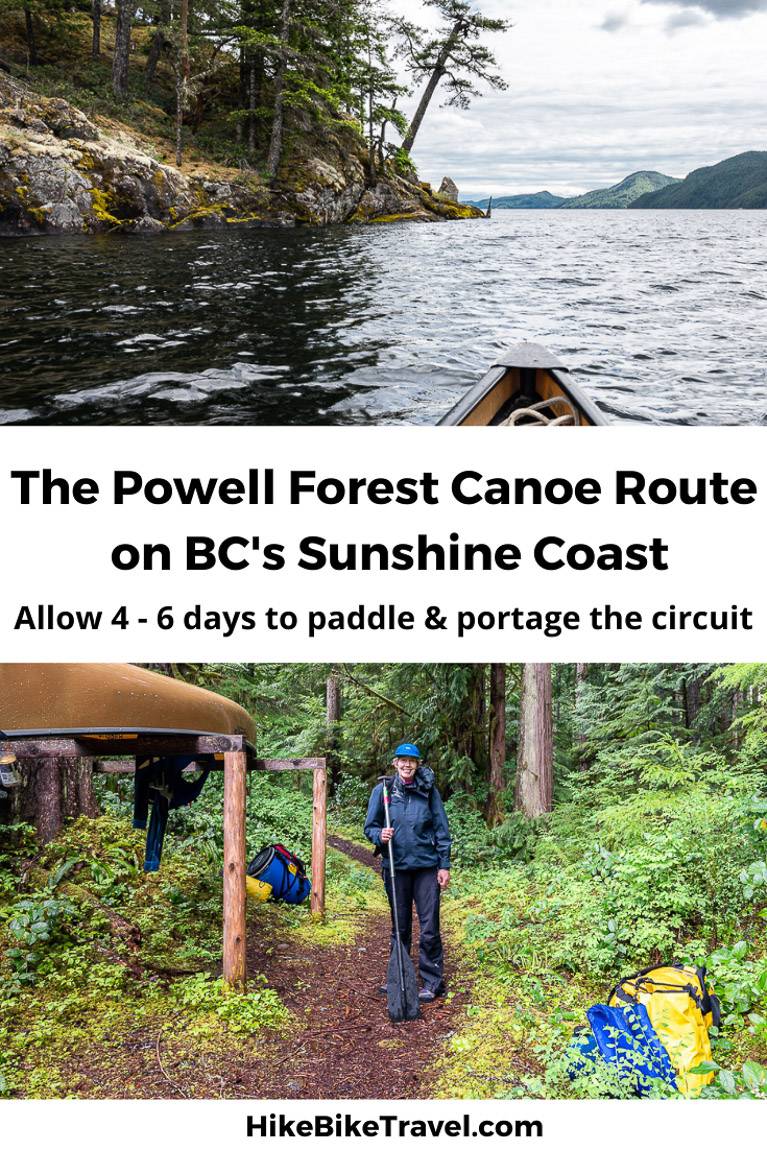
Powell Forest Canoe Route – The Full Experience
Table of Contents
If you paddle the Powell Forest Canoe Route, you will cover 57 kilometres, via eight lakes and five portages over the course of between four to six days. We did it in five days but could have knocked it off in four as the wind was calm on our second to last day. It’s not a full-on wilderness adventure, though make no mistake – there are plenty of sections that feel wild and far from humanity. The reality is that there is a network of logging roads, some that even cross the portages, so you might hear the odd logging truck. And on both Lois Lake and Powell Lake, you will pass numerous floating cottages. That might give some people comfort, but others who are looking for extreme solitude won’t find it here. I personally liked the mix.
The Powell Forest Canoe Route is celebrating its fortieth anniversary this year. Back in the day, the Powell River Tourist Bureau and Chamber of Commerce were approached by the government to find some work for a lot of unemployed loggers and others in the area. Grant money became available and with the help of lifelong canoeist Gerhardt Tollas, a route was proved out that took advantage of old logging and recreational roads for some of the portages. The rest one might say is history.
In chatting with Randy Mitchell, the original owner of Mitchell’s Canoe & Kayak Sales & Rentals, I heard his concerns about the future of the route. He’d like it to retain its wilder qualities, while protecting riparian areas so the birds and critters living there can continue to do so. That probably requires a bigger buffer when it comes to logging, so there will likely be some politics involved so all parties stay happy. A quote he mentioned, taken from an elderly woman on the Walter Kronkite news hours years ago is likely truer now than ever – “Protect your wild places. You need them to stay sane.” His advice to me, acting as he is now as the spokesperson for the Friends of the Powell Forest Canoe Route, is that everyone needs nature therapy. He says people need to get around in a non-motorized fashion, using their muscles, away from devices. He says magic happens when that happens and you’re sitting around a campfire sharing experiences, staring into the fire. I couldn’t agree more and hope that people follow his sage advice.
This post includes some affiliate links. If you make a qualifying purchase through one of these links, I will receive a small percentage of the sale at no extra cost to you. Thank you for your support.

Day one on the Powell Forest Canoe Route
Start: Lois Lake via a shuttle with Sasquatch Trails
Paddle: 8.5 kilometres (plus more for us as we got sidetracked)
Portage: Lois Lake – Horseshoe Lake Portage – 1502 metres one way (we did it three times, two with loads so 4,506 metres total)
Camp: South end of Horseshoe Lake
Experience: Chad Mitchell from Sasquatch Trails picked us up in Lund and dropped us off at the launch site at Lois Lake in the rain. Getting wet right off the bat isn’t my favourite thing to do, but we figured, it would be calm – and it was, and by paddling we would stay warm – and we did until we stopped for lunch. By then we were quite wet even with all our rain gear on, so we pulled on wool hats and down jackets which made all the difference. (Be sure to pack warm clothes for hypothermia-like conditions.)
Lois Lake is dammed – something we didn’t appreciate until we started paddling. The first few kilometres took us past a few floating homes (also an unexpected sight for me) and hundreds of tree stumps. You must pay attention when you’re paddling near the stumps as some stumps are very close to surface. The paddling was easy right off the bat- no big winds or waves to contend with. However, we did get off track – because we didn’t realize you should follow the red markers to the portage. We were doing that – and heading in the right direction but then saw a bridge over a river in the distance and wondered if that might be the way to go.
The bottom line is that we took a circuitous route to get to the portage – but in fairness to our navigation skills, the river we went to explore was not marked on the map. The first portage is in unbelievably good shape though it is a long one. We did every portage three times; once with the food barrel, paddles, and a small bag or two for John and some of the bigger gear for me. Then we’d walk back, and John would carry the canoe and I’d take the rest of the load. Roughly every 100 to 150 metres there were canoe racks so you could rest. We would usually do around a 500-metre carry and then go back to get the rest of our gear – and continue leapfrogging like that until the end of the portage.
On arrival at Horseshoe Lake, we were pleased to see that there was no one else so we ended up with a prime campsite overlooking the lake. It was lovely, especially as the rain had stopped and we had completely dried out. Setting up camp chairs and enjoying a glass of wine was an awesome way to finish the day.

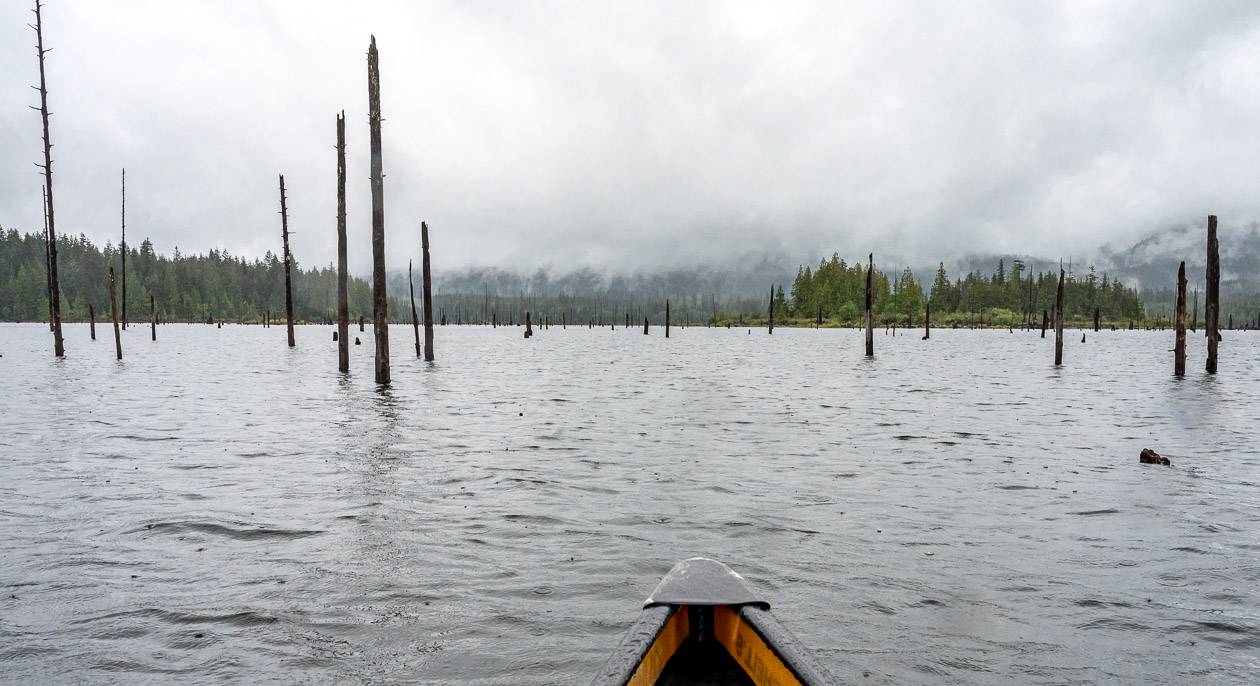
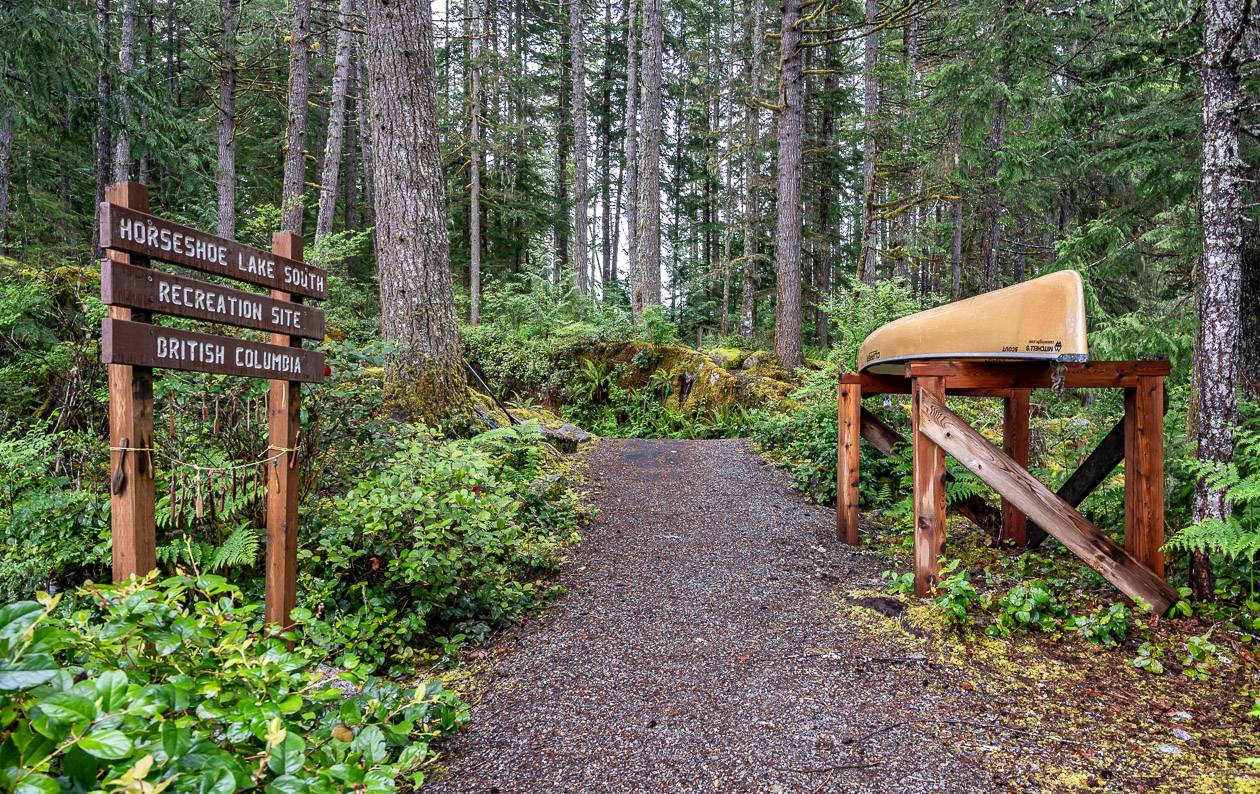
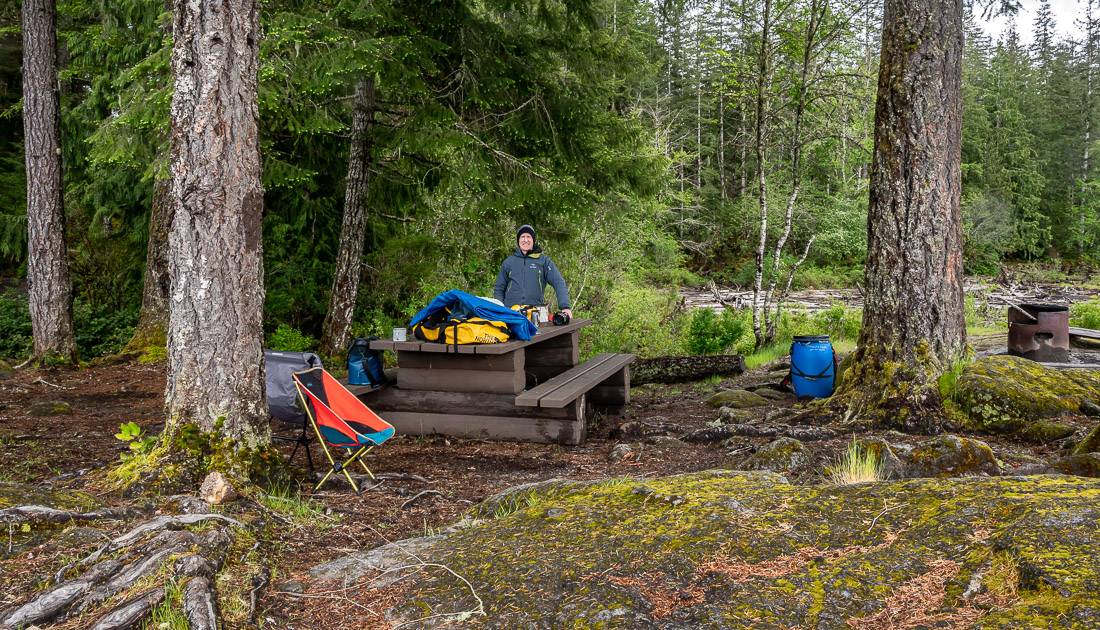
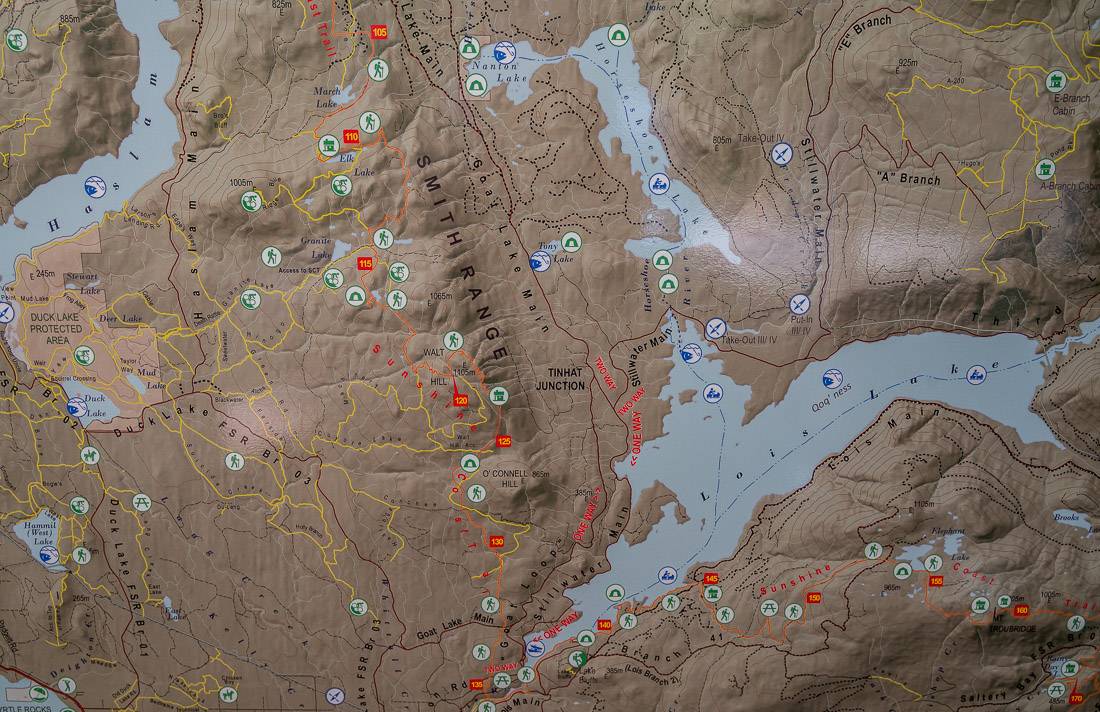
Day two on the Powell Forest Canoe Route
Start: South end of Horseshoe Lake
Paddle: 4.0 kilometres on the Horseshoe Lake – Nanton Lake combination plus about one kilometre on Ireland Lake and one kilometre on Dodd Lake for a total of 6 kilometres
Portage: North end of Nanton Lake to Ireland Lake – 2310 metres one way plus Ireland Lake to Dodd Lake – 985 metres. Total one way: 3295 metres but we did it three times again, two with loads for a grand total of 9885 metres.
Camp: Chipmunk Peninsula campsite on Dodd Lake
Experience: I always feel like it takes a while to get into the rhythm of the outdoors, and this trip was no exception. We hit our stride on the second day, paddling and portaging from Horseshoe Lake to Dodd Lake. Just getting out of the campsite was interesting. I kneeled in the front of the canoe and pushed logs around creating a path to log-free water. I understand that log jams on Horseshoe Lake are a normal sight.
It was easy paddling up the length of Horseshoe Lake and into Nanton Lake. We both enjoyed the bird life and the peacefulness. Once we reached the portage on Nanton Lake, we had completed all but a couple of kilometres of paddling for the day. Most of our 7-hour day involved two portages.
The first portage to Ireland Lake was relatively easy but it wasn’t in the same sort of shape as the portage to Horseshoe Lake. The second portage from Ireland Lake to Dodd Lake was a treat. Large stumps and some grand looking trees made it an interesting one. By the time we arrived at Dodd Lake, it had started to shower again, and the skies didn’t look like they would clear up anytime soon.
There is a campsite at the end of the portage with lovely views up Dodd Lake. But you can drive to the campsite – and on a trip like this, I much prefer the wilderness experience. We loaded everything back into the canoe and paddled about a kilometre to the Chipmunk Peninsula. There’s a big site here – in the trees so it’s on the dark side, but it’s also way more protected. It turned out to be a great choice as it rained hard all night.
There is another route that gets you to the Chipmunk Peninsula that involves less portaging. It takes you from the northeast end of Horseshoe Lake up a hill to Little Horseshoe Lake. Another portage puts you on Beaver Lake and then there is a final short portage to Dodd Lake. We had been told that the portage hadn’t been brushed out and that it required more effort than the one we did. But the Mitchell family describe it as being the wildest part of the canoe route and one of their favourite parts of the trip. So, if you like a real wilderness experience go right (east), not left (west) at the end of Horseshoe Lake.
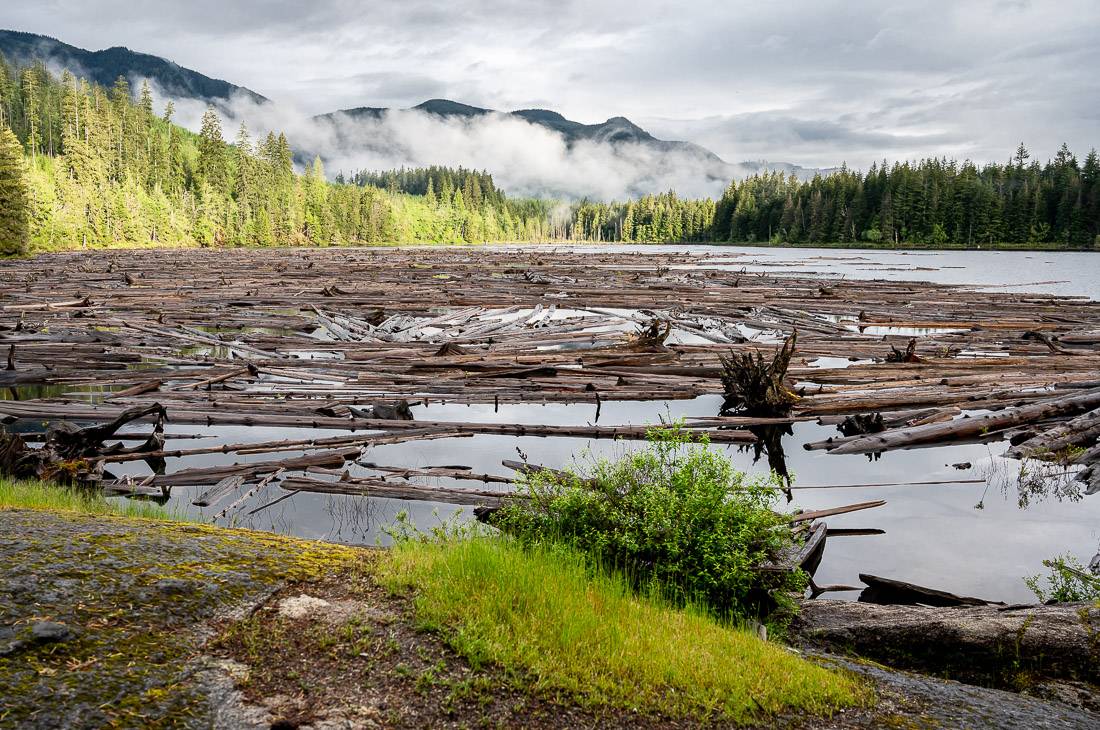
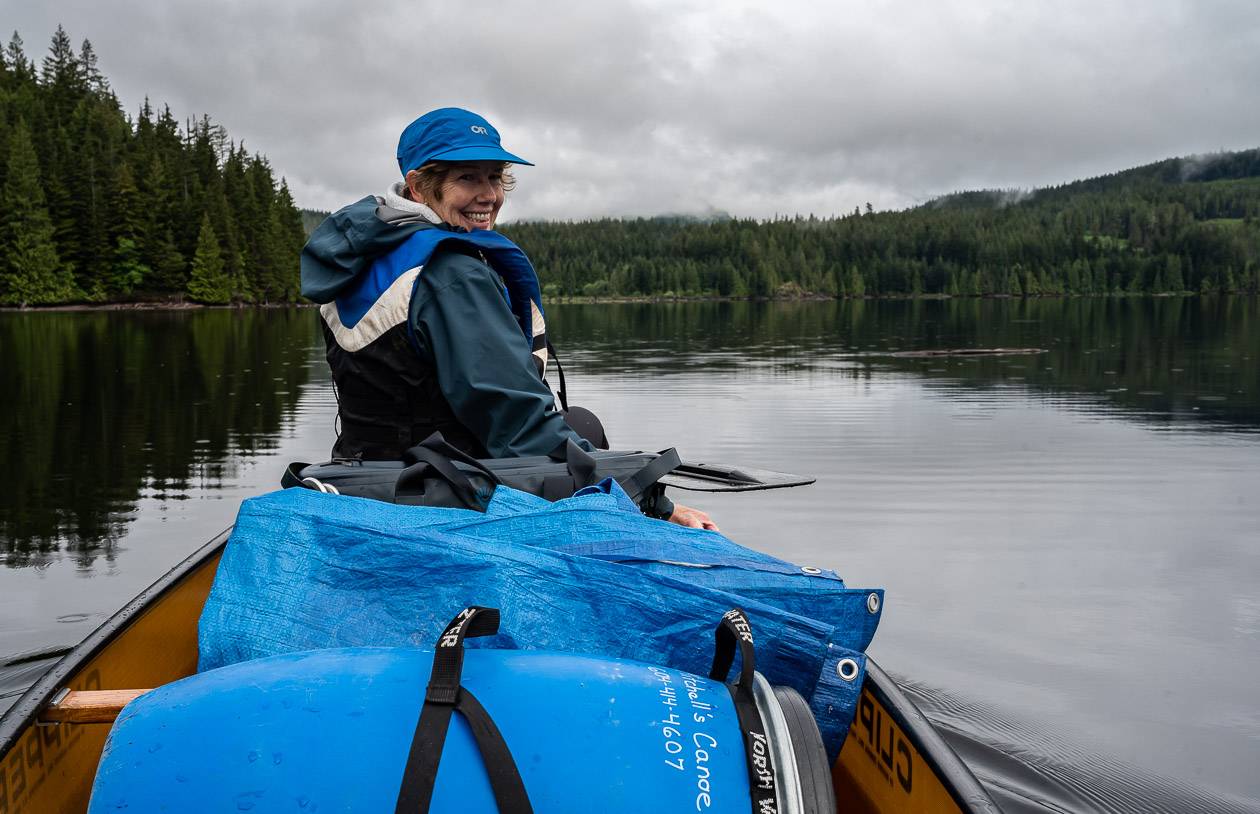
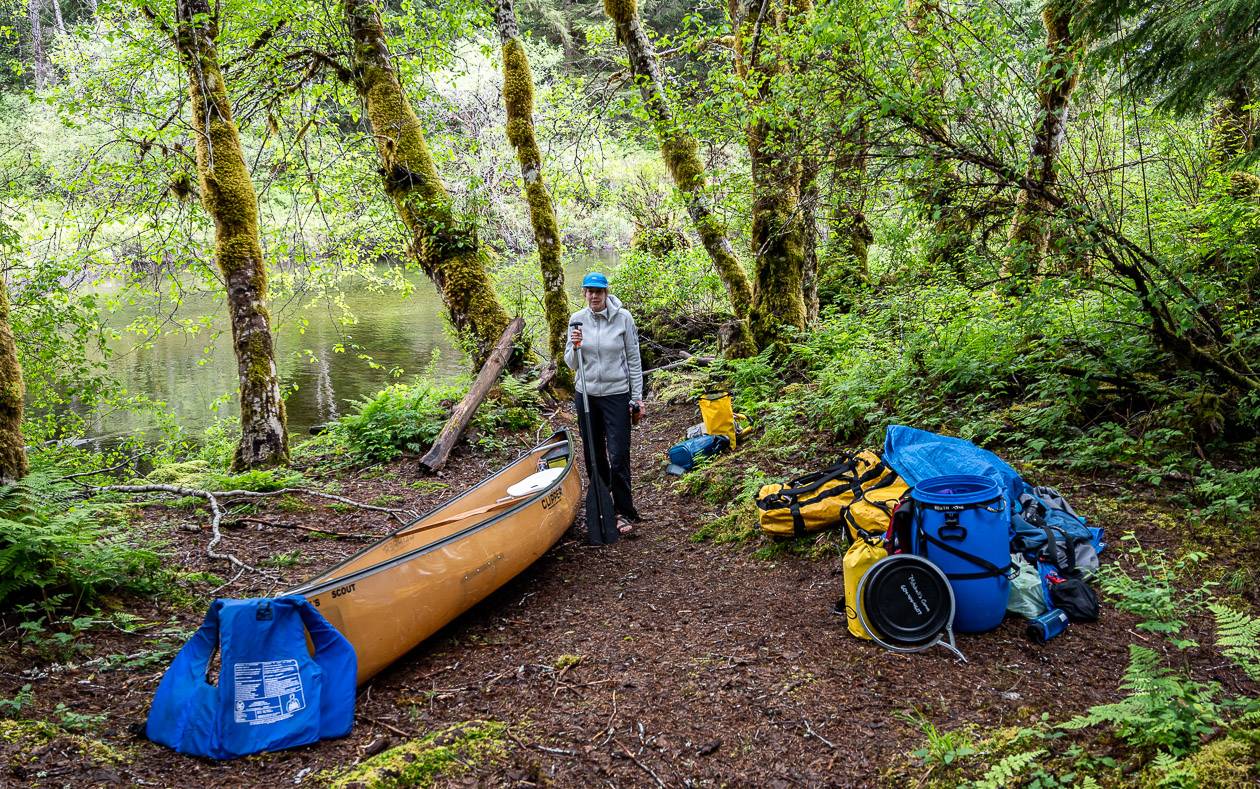
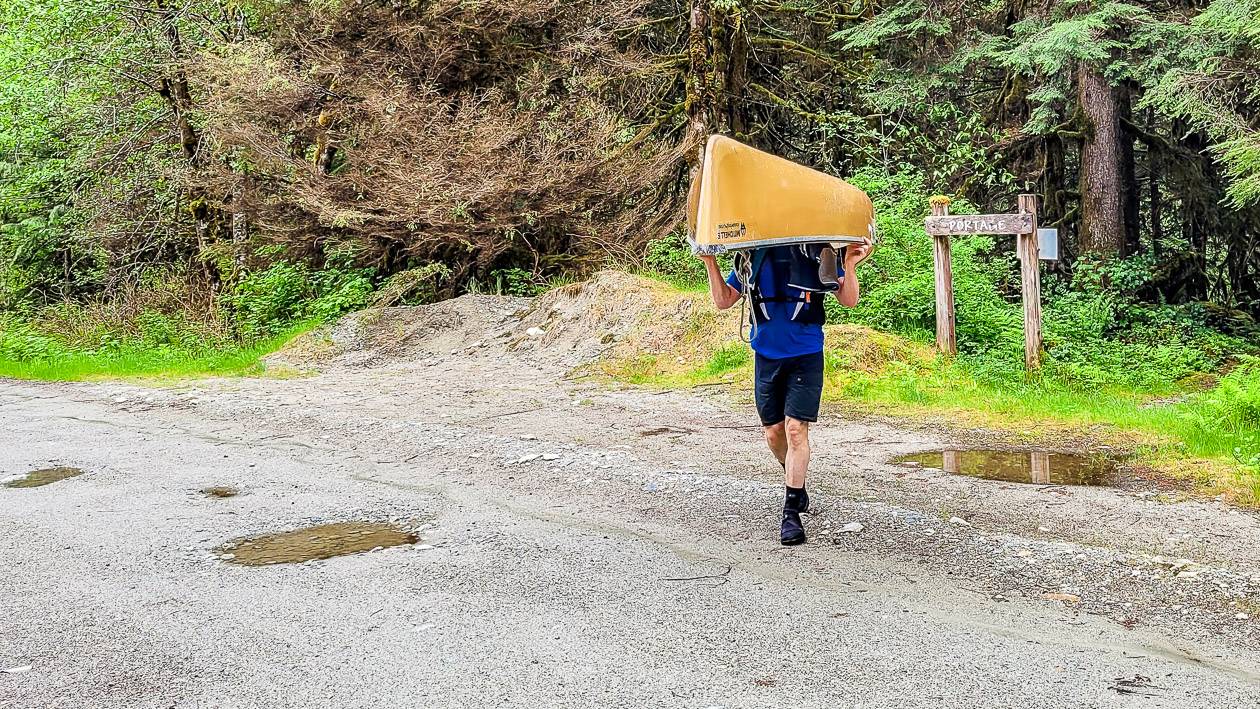

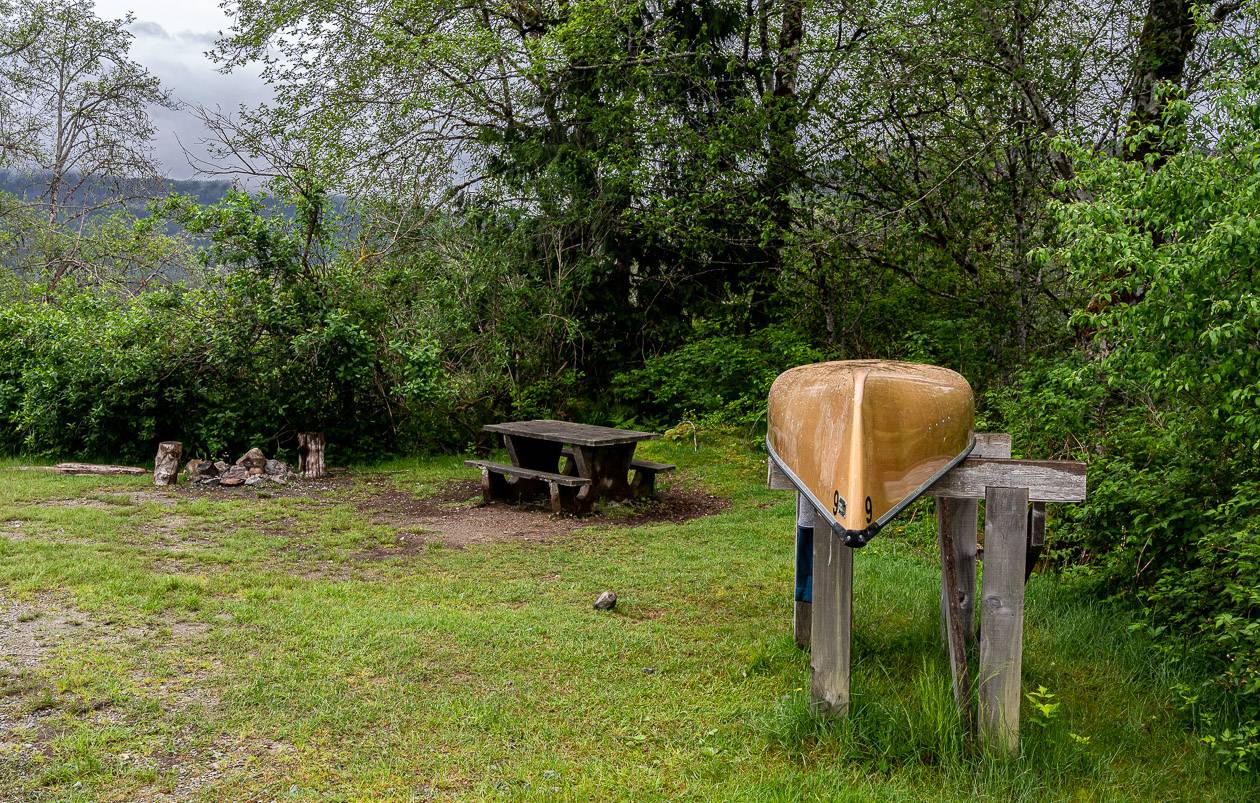

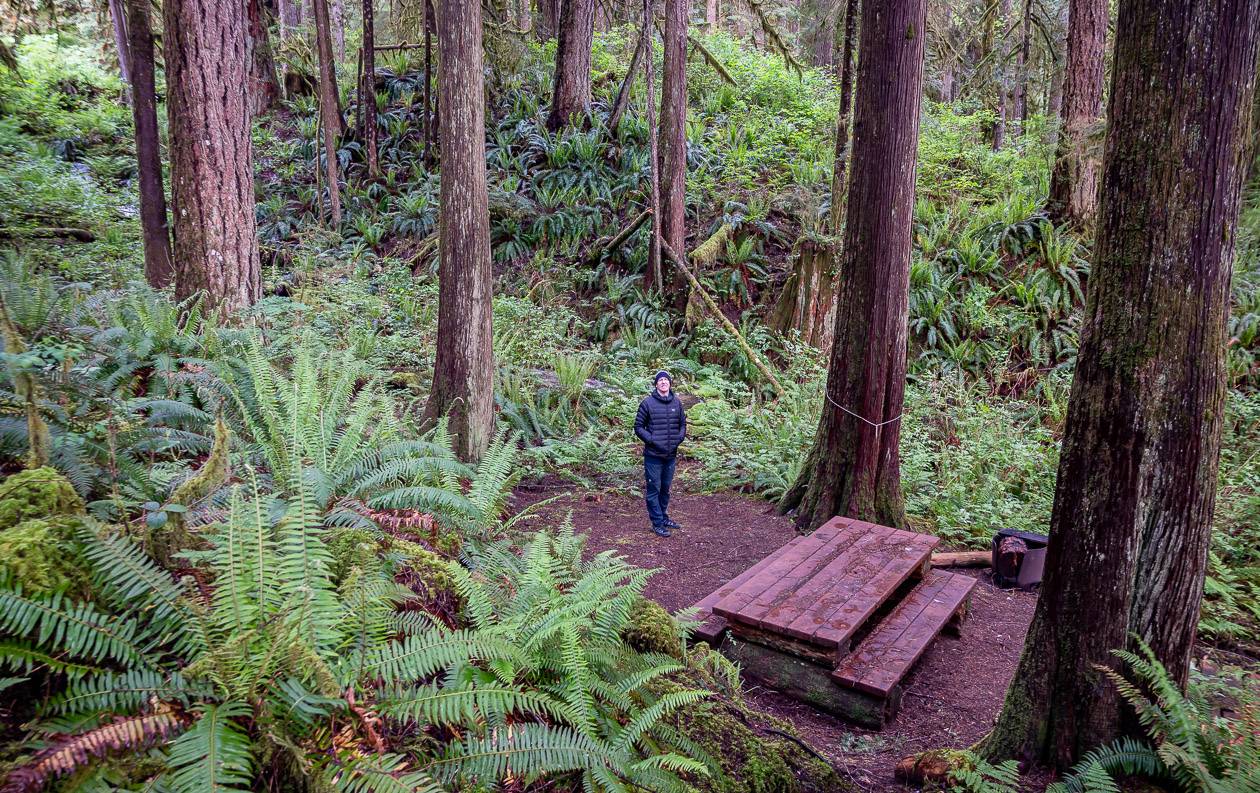
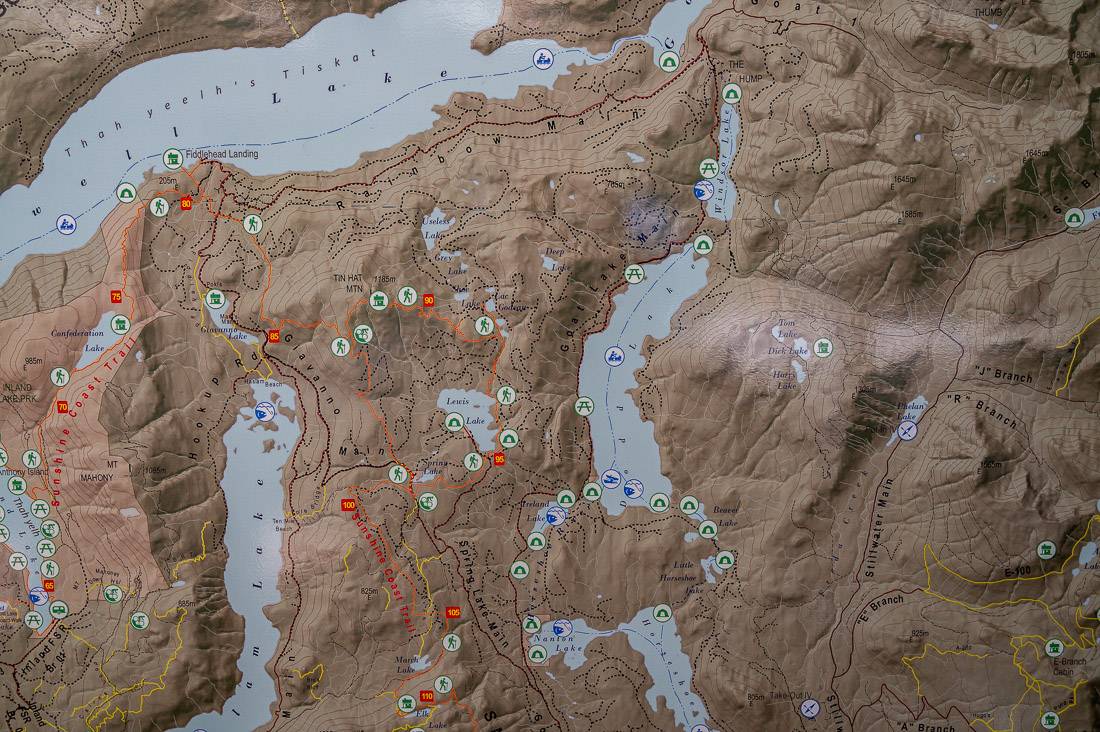
Day three on the Powell Forest Canoe Route
Start: Chipmunk Lake campsite on Dodd Lake
Paddle: 7.0 kilometres on Dodd Lake – Nanton Lake combination plus 2.2 kilometres on Windsor Lake for a total of 9.2 kilometres
Portage: Dodd Lake to Windsor Lake – 717 metres one way plus Windsor Lake to Goat Lake – 2379 metres one way. Total one way: 3096 metres but we did it three times again, two with loads, for a grand total of 9288 metres.
Camp: At the end of the portage on Goat Lake
Experience: Today could have been an easy day but we chose to make it the hardest day out of the five with two portages, including the one to Goat Lake via Cardiac Hill.
The day started wet and uninspiring. But in no time the showers stopped, but the mist hung around, creating a moodiness to Dodd Lake. It was a fantastic paddling experience – with quiet water and crystal-clear reflections. In short order we were at the north end of Dodd Lake, doing an easy portage past more massive trees to Windsor Lake. Another quick and beautiful paddle up Windsor Lake put as at the Windsor Lake campsite and the start of the portage to Goat Lake.
After a night of rain, all the Windsor Lake campsites were filled with water. Hopefully money can be found for wood so some tent platforms can be built, as this is not where you want to be staying on a rainy night. After eating lunch in a small shelter with the showers beginning again, we looked at each other and said Let’s get out of here. We decided that we’d rather do the hardest portage of the trip while it was raining because sitting in a tent didn’t have any appeal.
It is a 2,379-metre portage from Windsor Lake to Goat Lake – and after humming and hawing we didn’t get started till about 2 PM. As this was June, we had loads of daylight, so we weren’t worried about portaging in the dark. The portage started off easily enough. There was some climbing, and I was thinking to myself that there seemed to be a lot of undue fuss about Cardiac Hill. In fact, the portage to the top was fast and beautiful through stands of well spaced trees and a forest carpeted with greenery. It was however the wettest section of any portage we’d done.
At the top we had a water break and then started down. Hmmm. Now I get it. The portage down to Goat Lake is very steep in places, especially with a canoe over your head. Throw in slimy logs, leaning, slippery boardwalks and some big steps – and now its not so hard to understand how it got the name Cardiac Hill. It is much easier on the ticker going in a counter clockwise direction than it would be coming up from Goat Lake.
We broke the carries up and over Cardiac Hill into five, so we were able to roll into camp within roughly three hours. We were both feeling pleased with ourselves – as the portage was over, the campsite was lovely and once again we had it all to ourselves. In no time, we had our tent up, we were cleaned up and the wine was poured. Life was sweet here on Goat Lake.
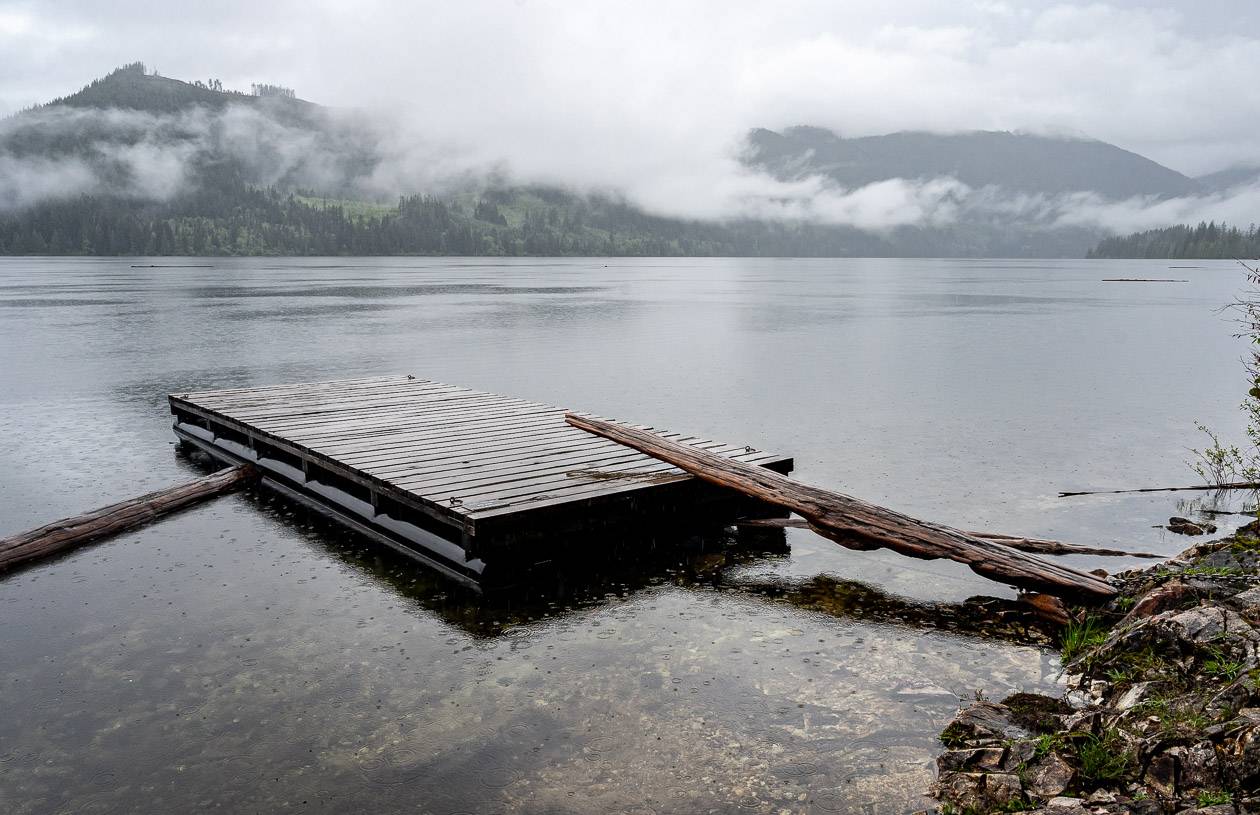


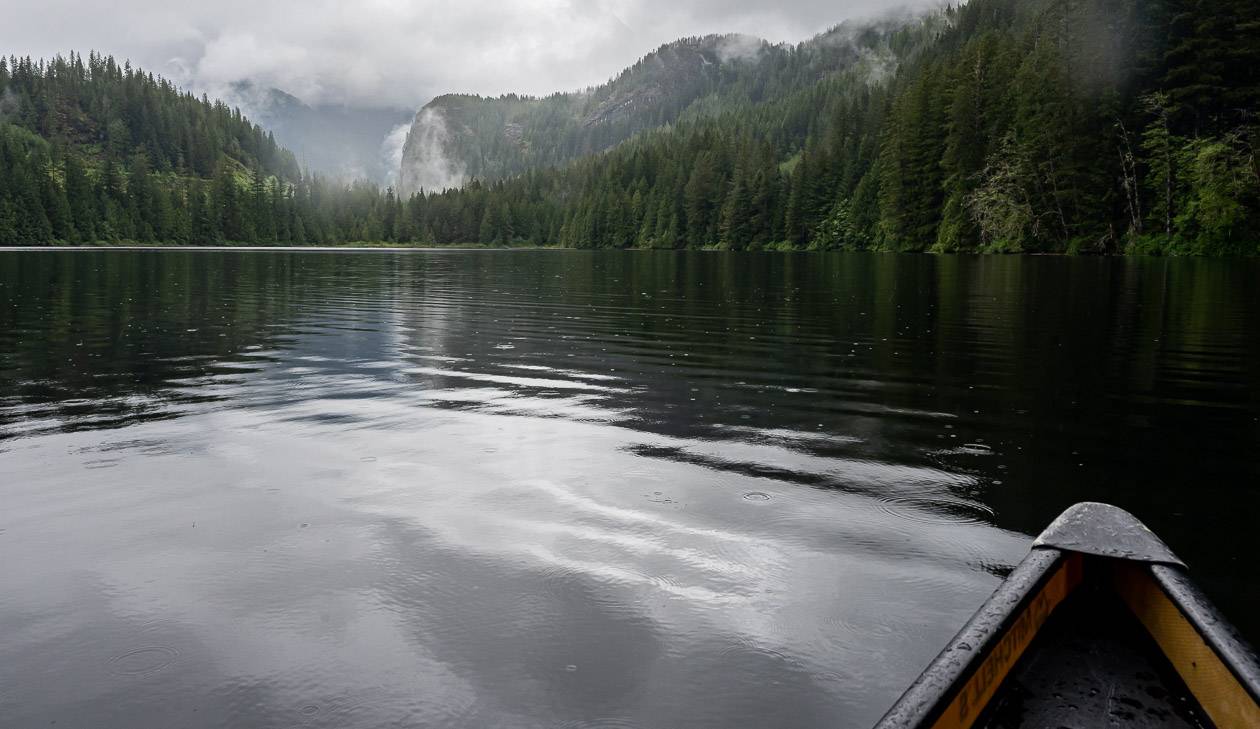
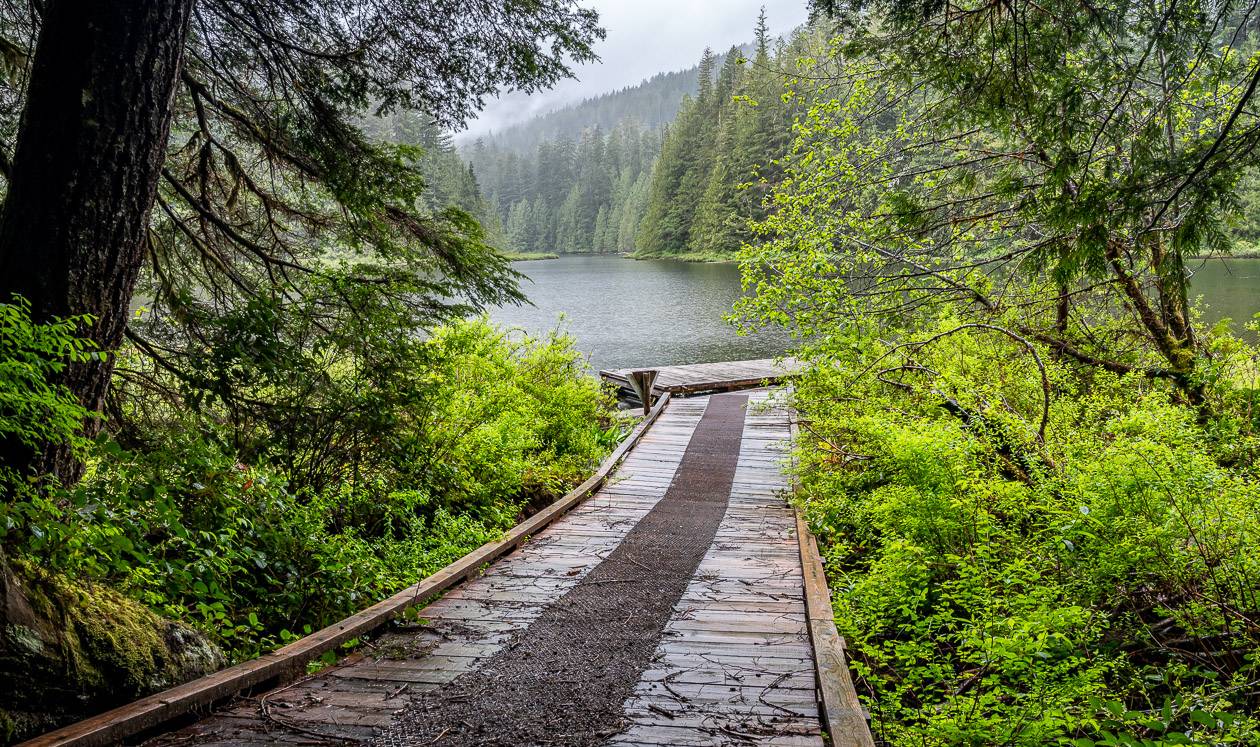
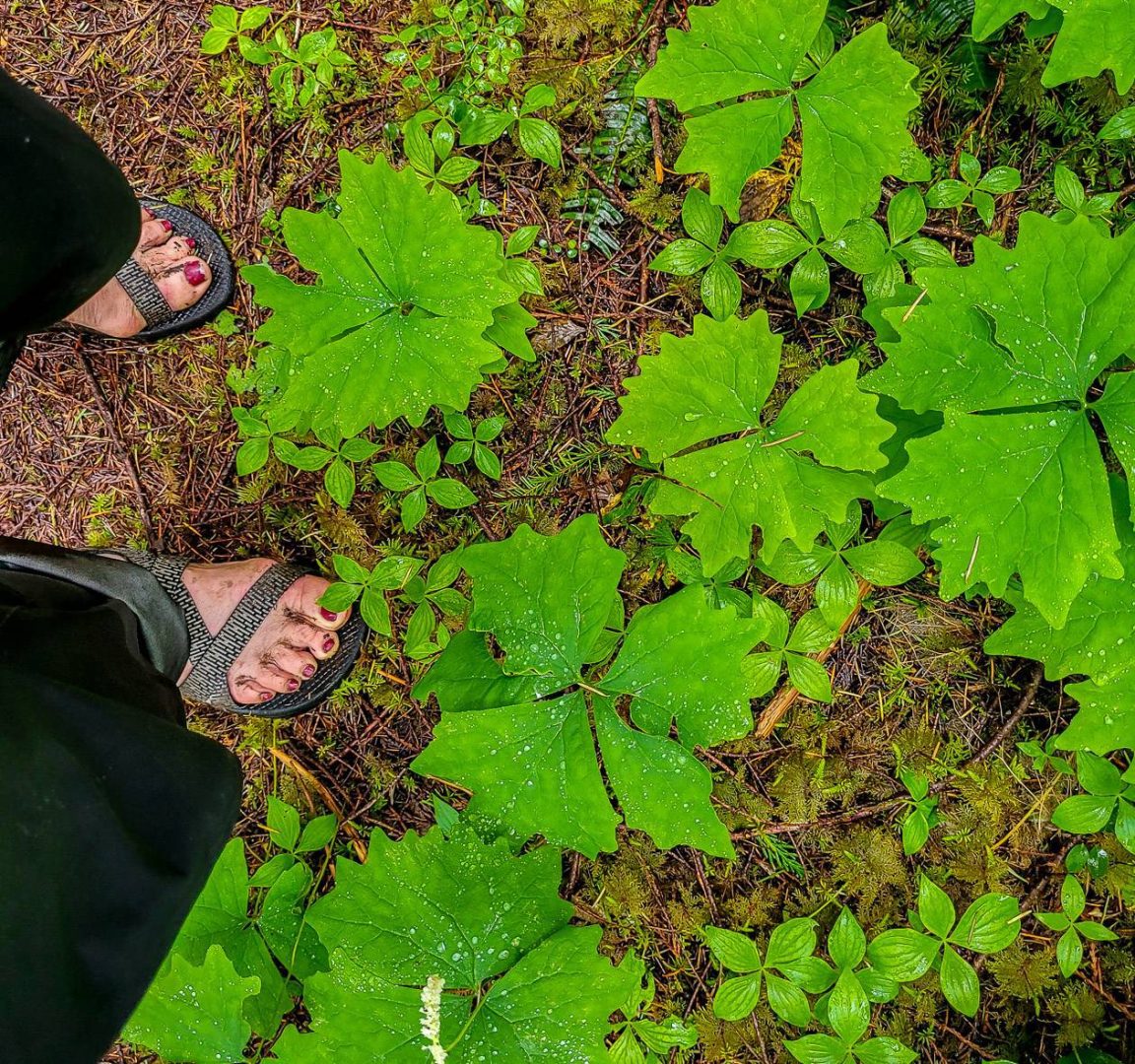
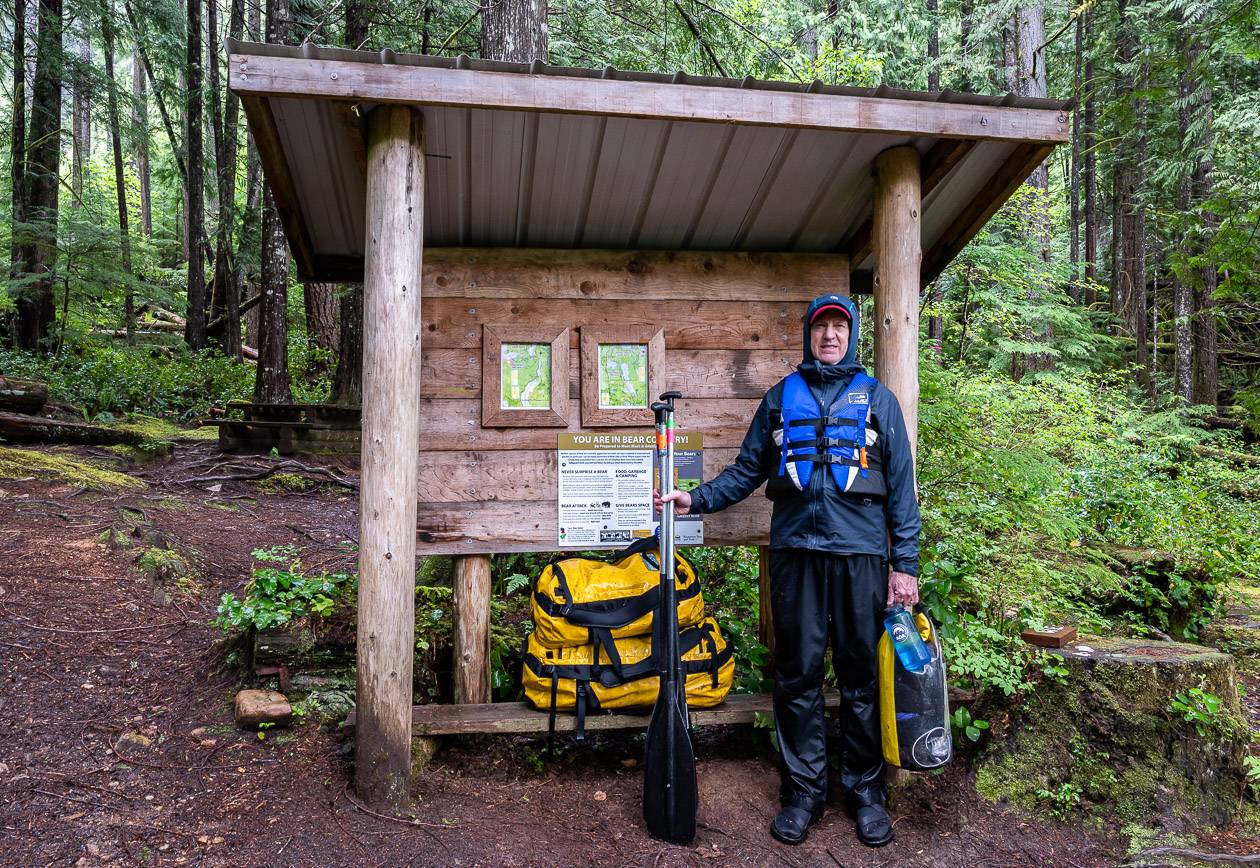

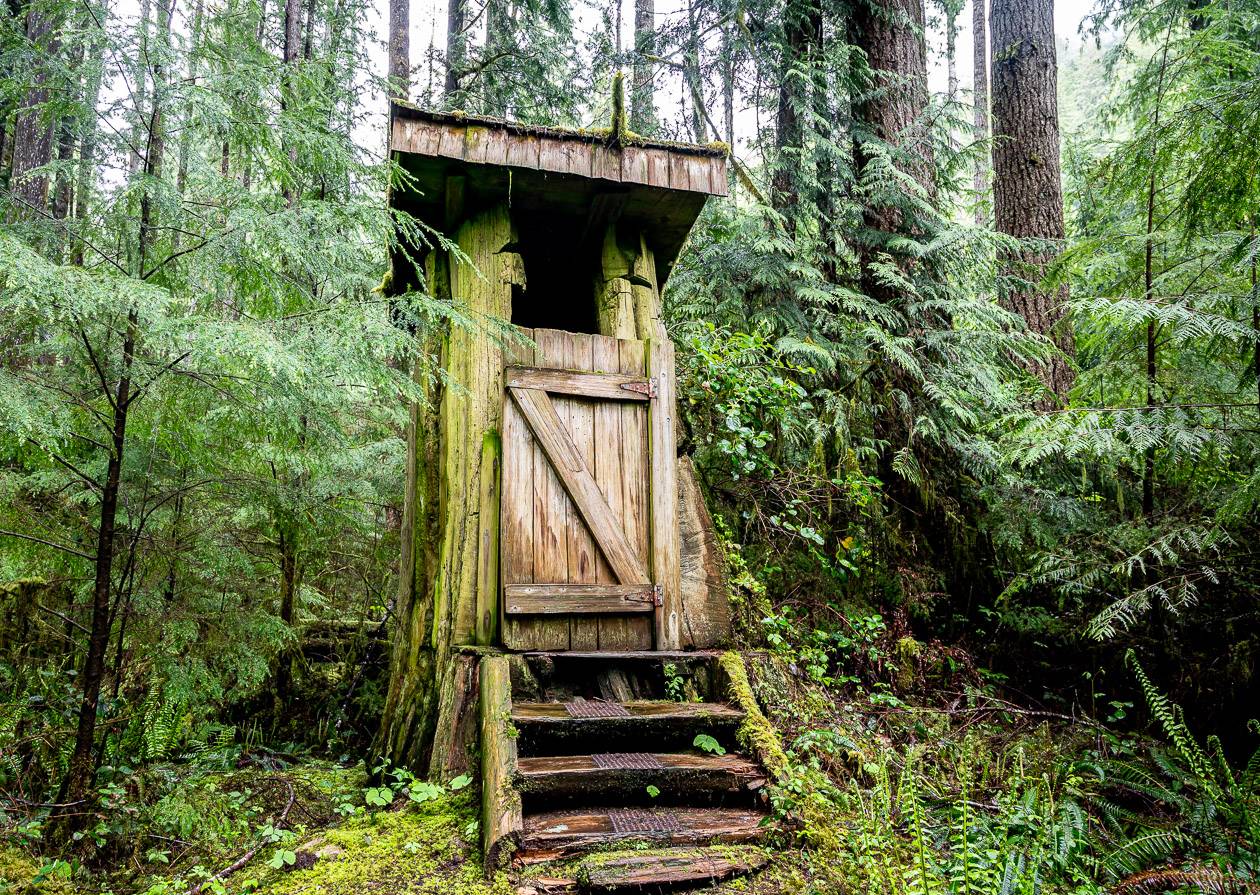
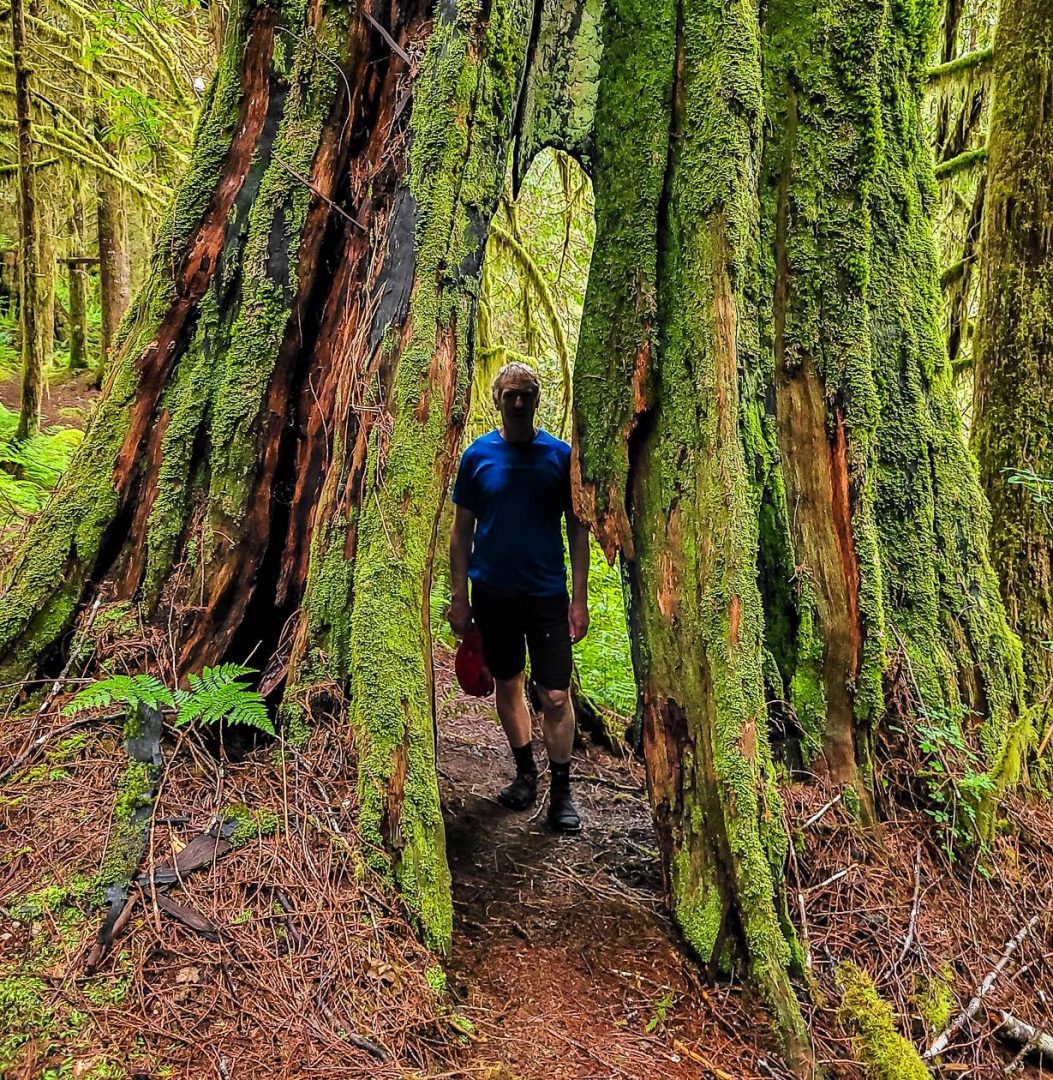
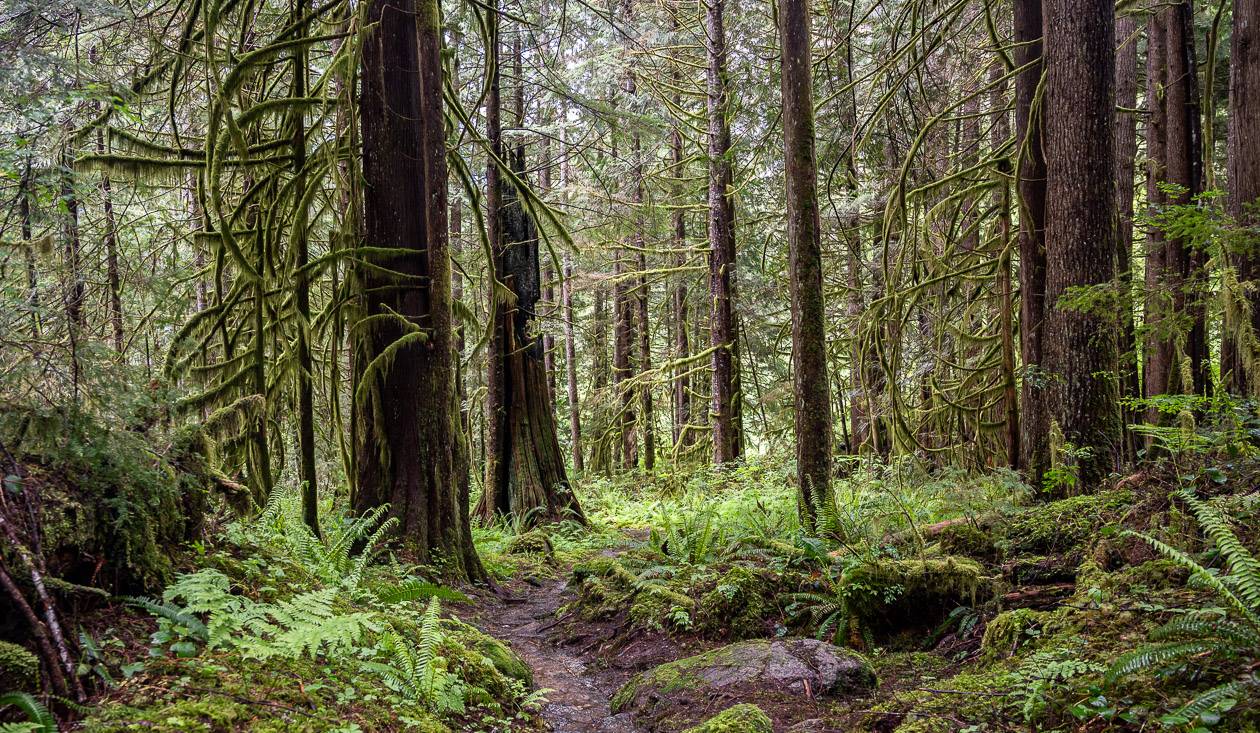
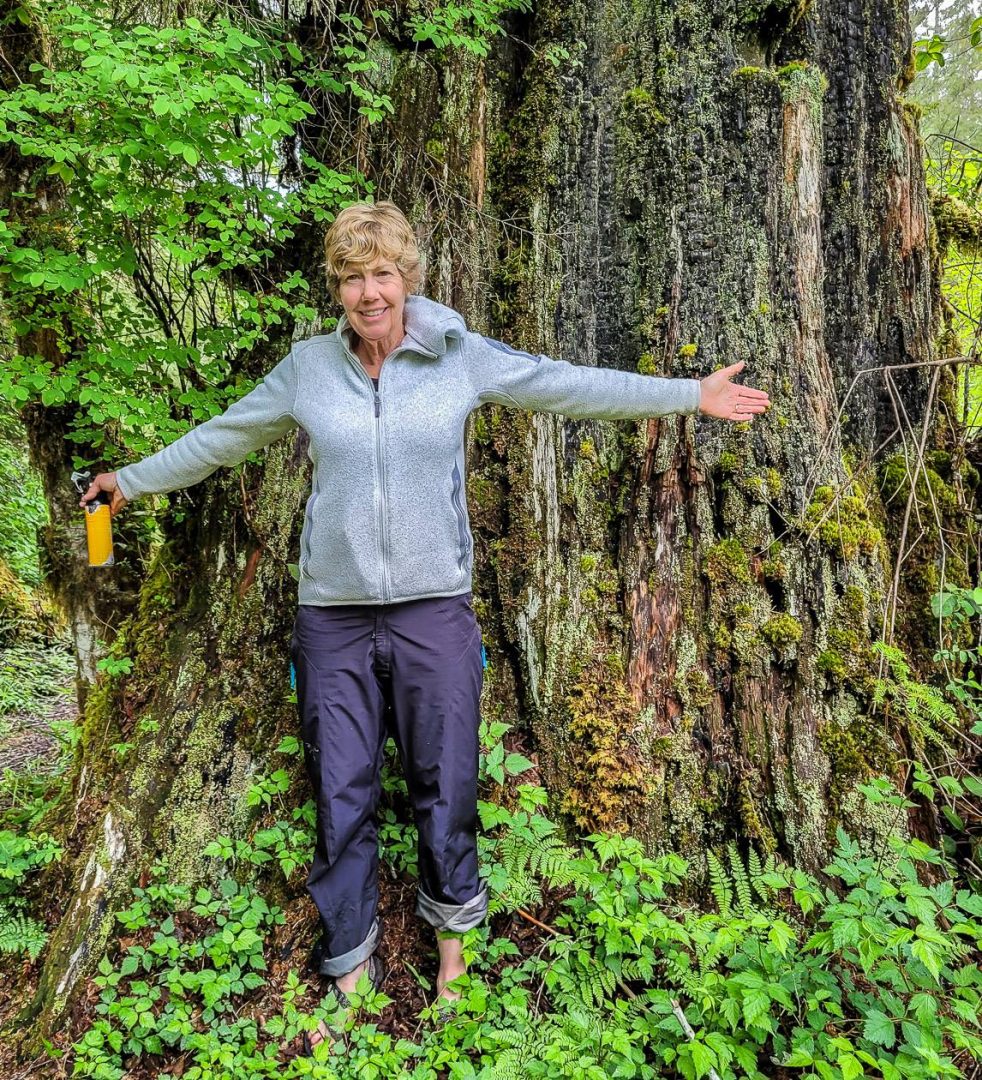

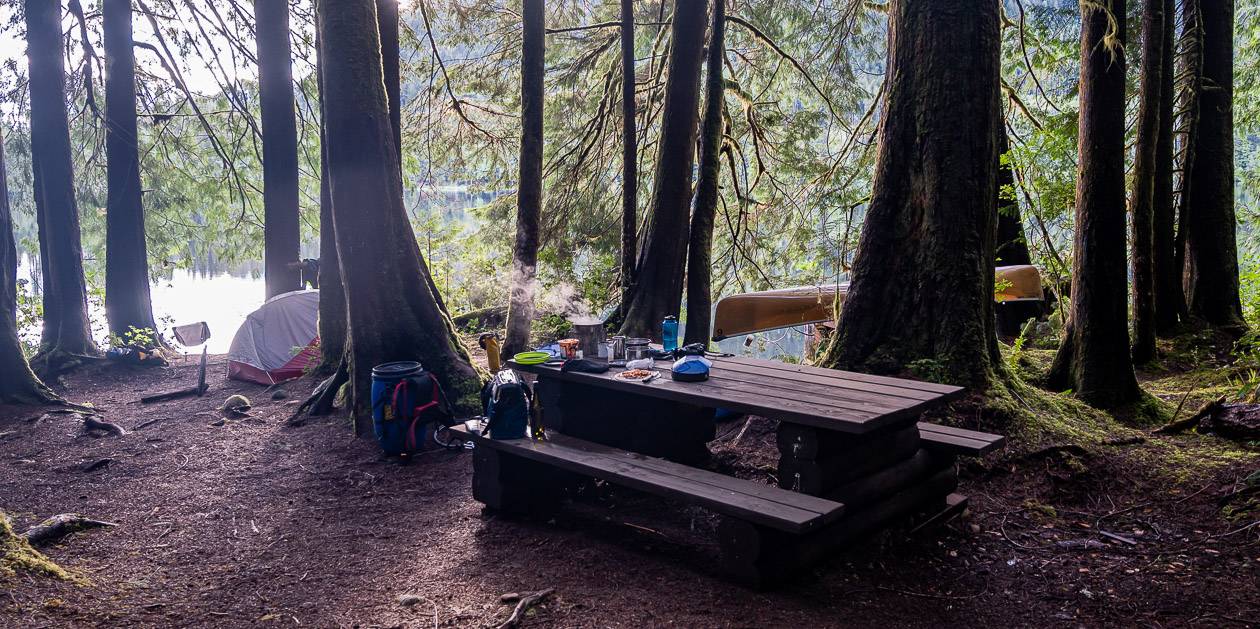
Day four on the Powell Forest Canoe Route
Start: Goat Lake campsite
Paddle: Approximately 22.0 kilometres from Goat Lake to the campsite at the start of the trail to Inland Lake
Portage: None
Camp: Campsite overlooking Powell Lake at the start of the trail to Inland Lake
Experience: After enjoying a leisurely breakfast, John and I hopped into the canoe and started paddling across Goat Lake to an inlet that ultimately took us to Powell Lake. The wind blew up in this section, so it had me wondering what was in store for us on the biggest lake of the paddle. Ultimately nothing is the bottom line. We completely lucked out with what turned out to be a calm, sunny, warm day of paddling. Often that isn’t the case on Powell Lake, and you have to work hard in the face of the wind. In hindsight, we could have paddled all the way to Mowat Bay, but we broke it up and paddled to a campsite at the start of the trail to Inland Lake.
I quite enjoyed canoeing past all the floating cottages on the water – though over the course of the day we saw only a handful of people in them. My understanding is that no more floating cottages can be built but again I was shocked at the sheer number of them. Some were lovingly maintained, while many had seen better days.
When you get to the hexagonal wood cottage, slow down and pull in behind the log boom. You’ll see the Fiddlehead Landing hut here, used by hikers on the Sunshine Coast Trail. We decided to stop here for lunch and have a look around. While the huts on the Sunshine Coast Trail are simple and free, it would be nice to see people practice Leave No Trace principles and pack out what they pack in. I did notice that there were bear boxes for food provided by the Sunshine Coast Shuttle. It would also be wonderful to see bear boxes along the Powell Forest Canoe Route.
We continued to the next campsite shown on the map which is perhaps 10 – 15 minutes from Fiddlehead Landing, I found it too dark – and it was also early enough and calm that we decided to keep going. Ultimately, we paddled for a few more hours and ended up at a campsite you need to look hard to find that is at the start of a route to Inland Lake – though I don’t think the trail is in very good condition.
There are a steep set of stairs up to a flat camping area with several sites, some of which are in the trees should it be stormy. The views are quite nice though the bugs on arrival were ferocious. They practiced kamikaze like attacks at our face and feet until I pulled out the bug spray. Don’t forget it.
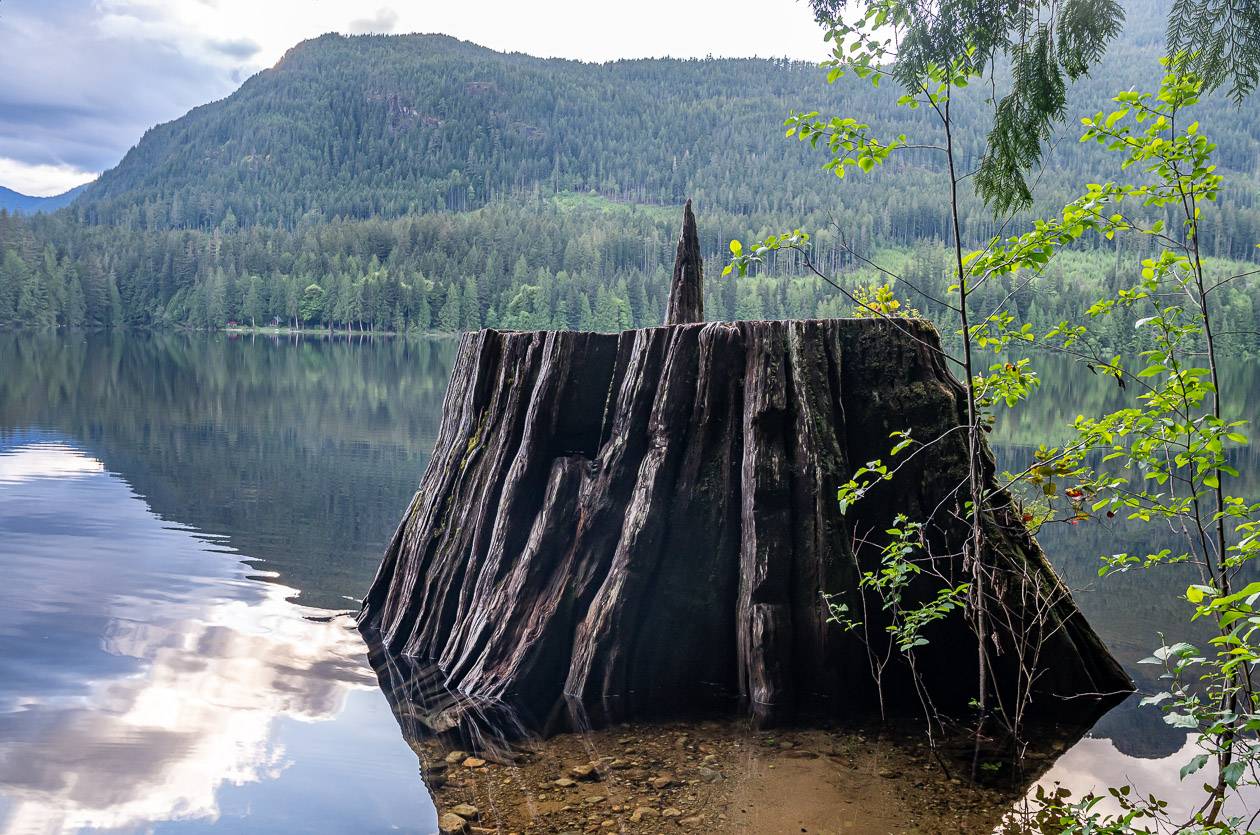
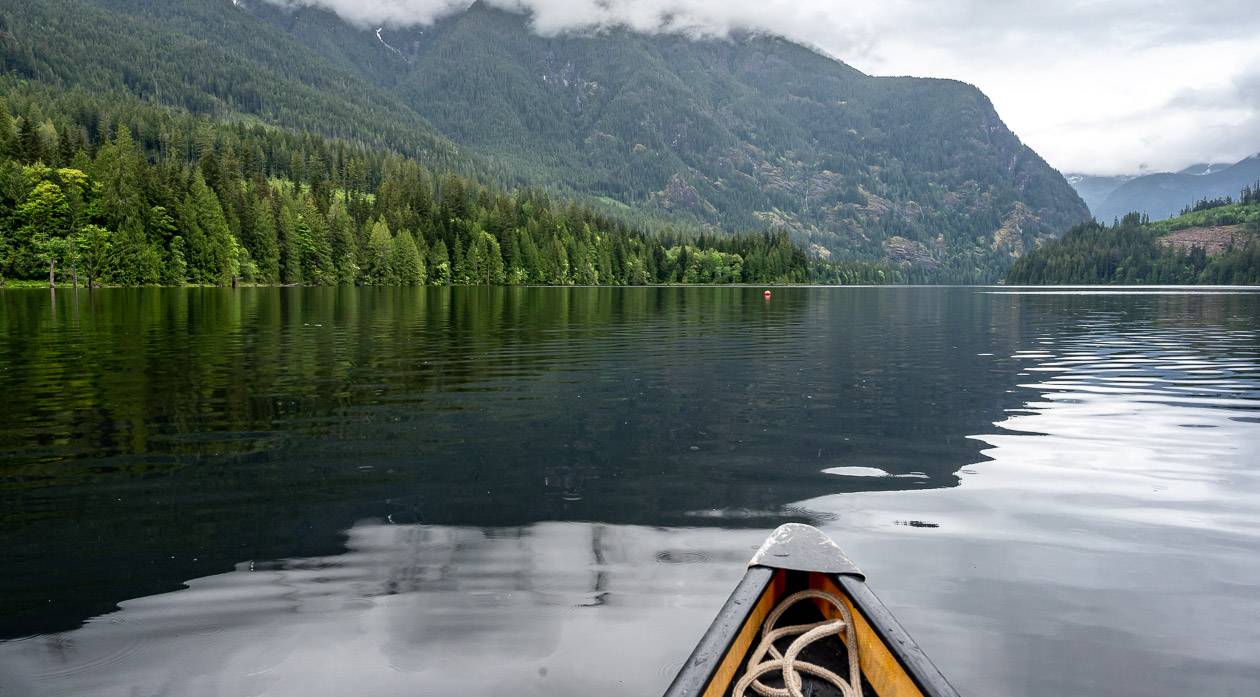
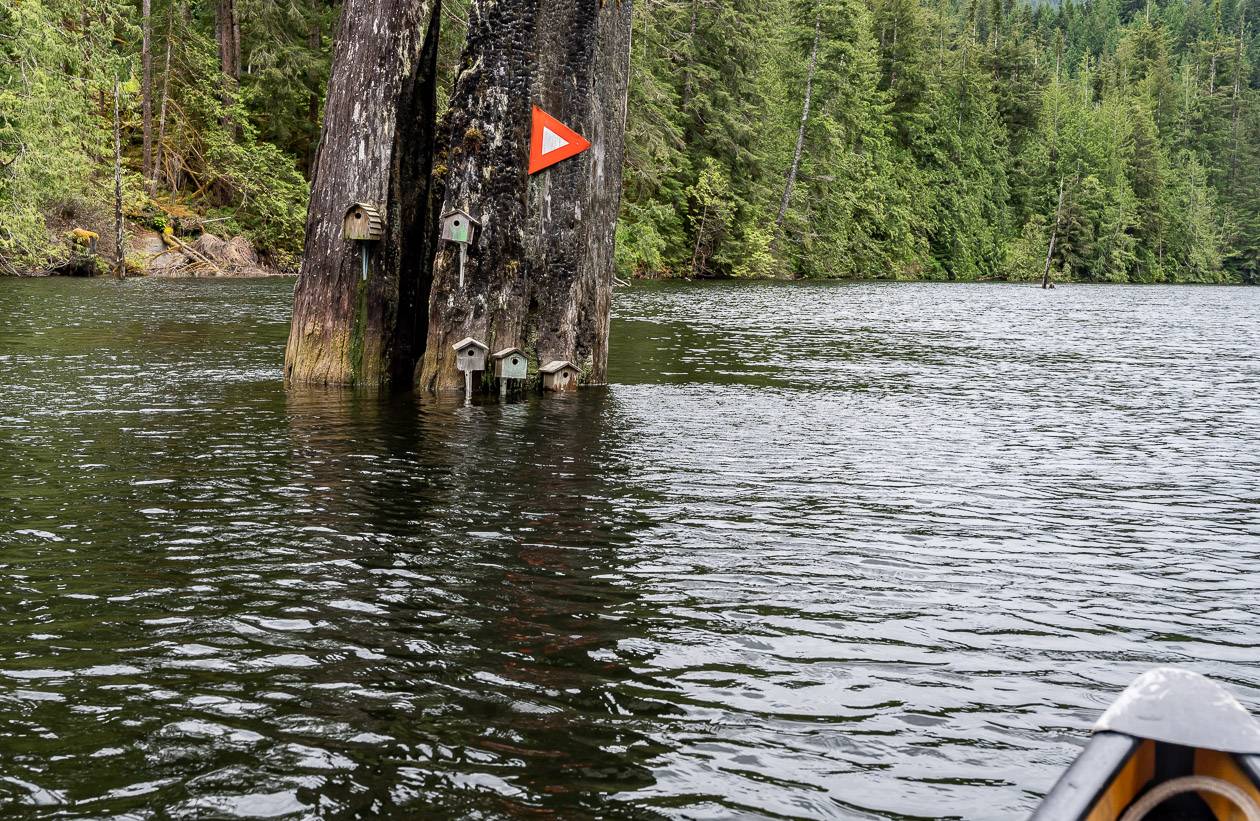
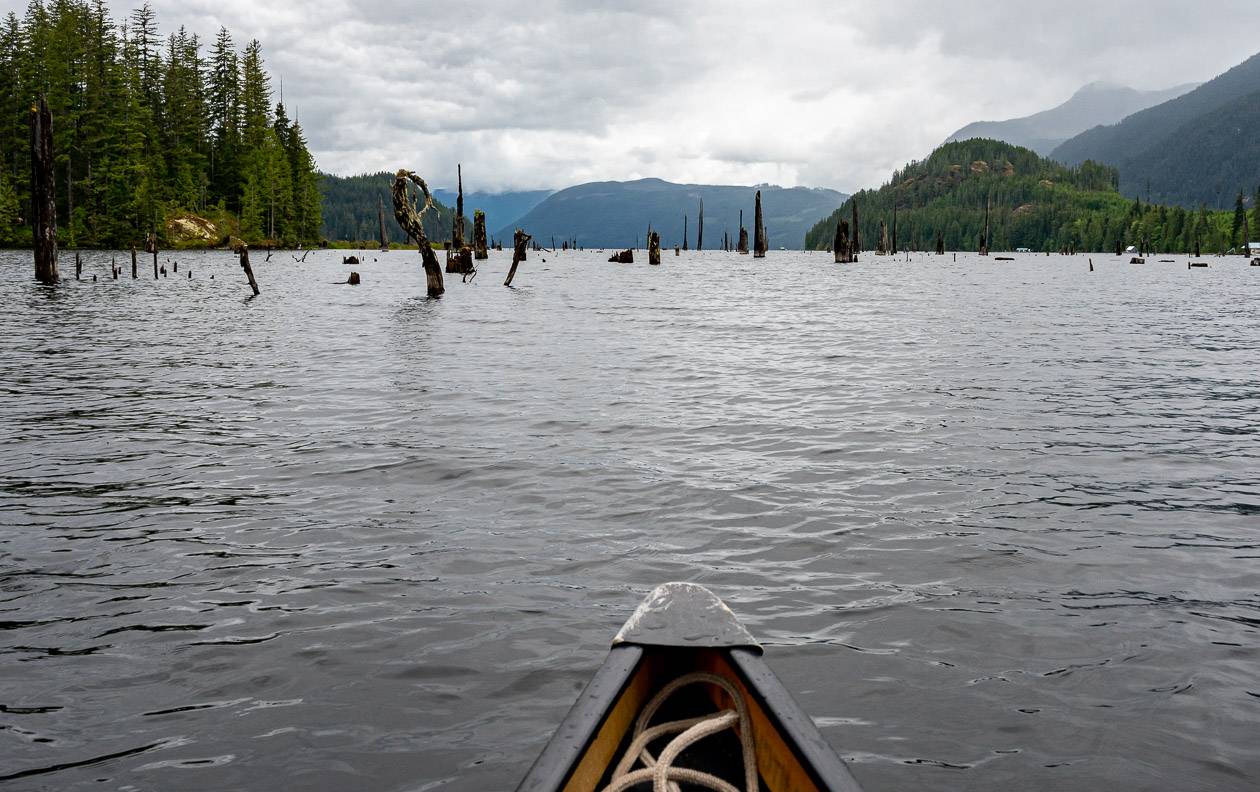
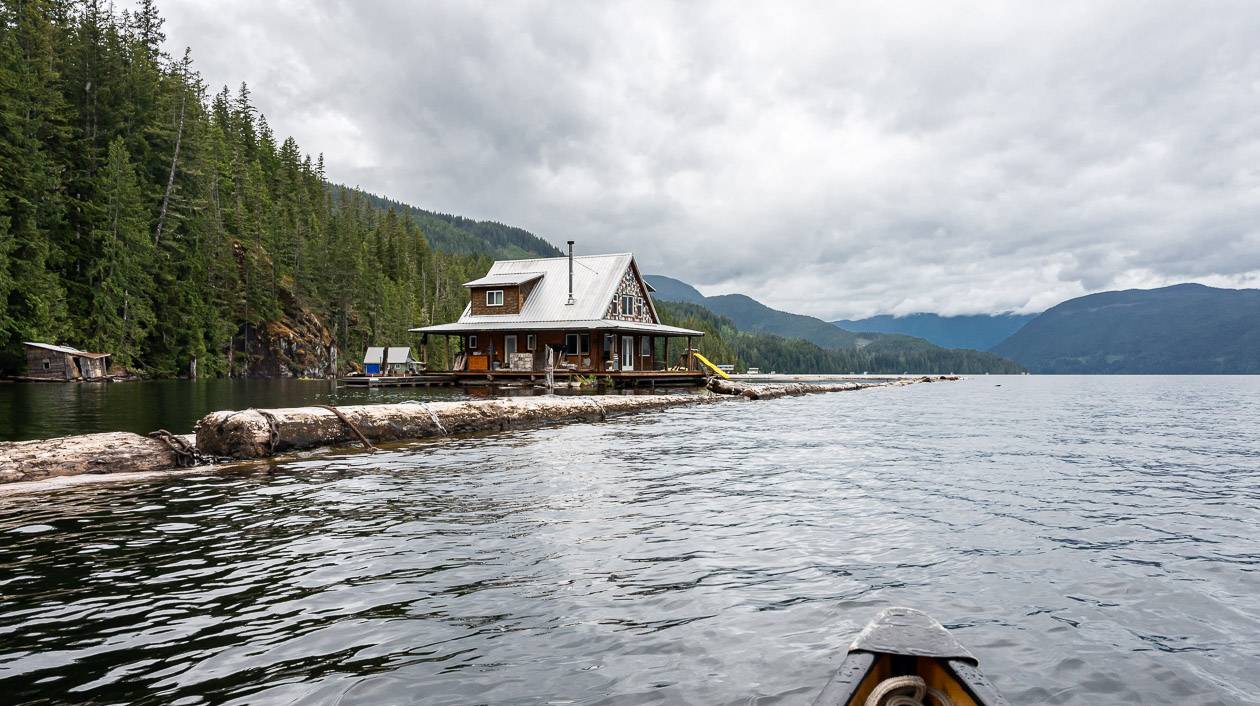


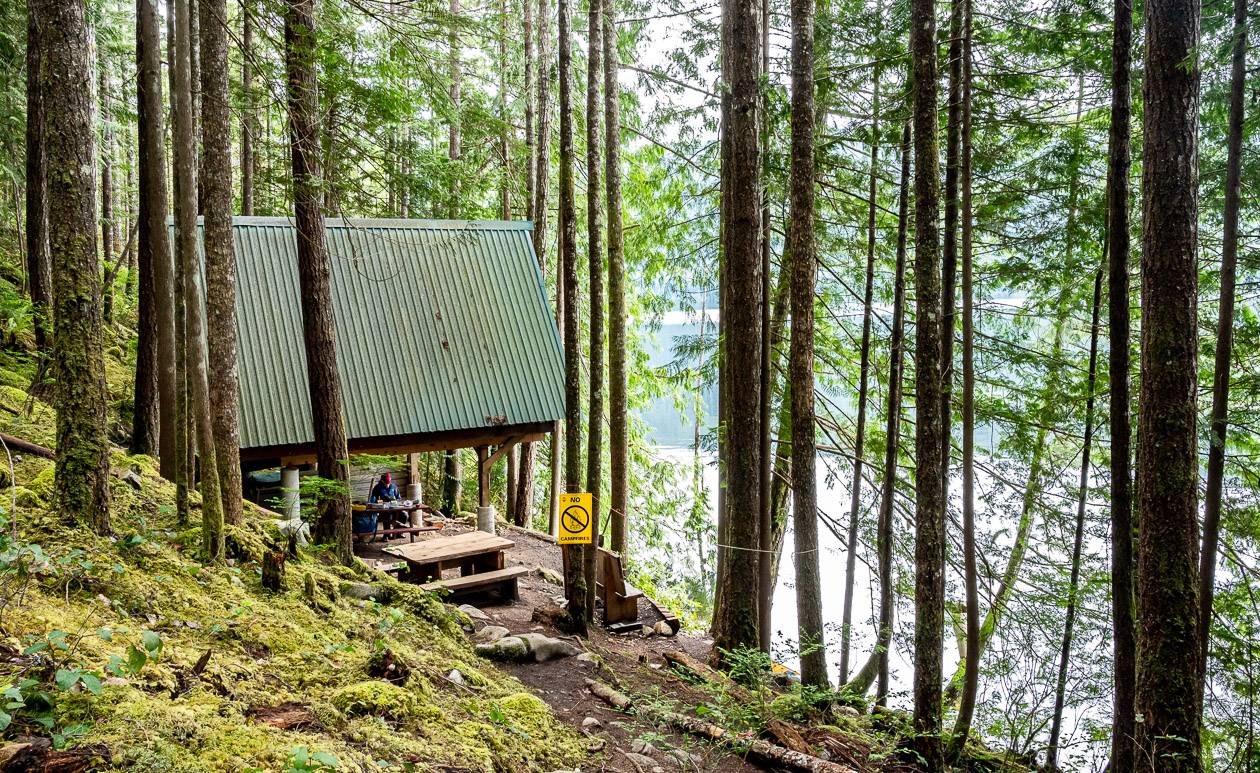
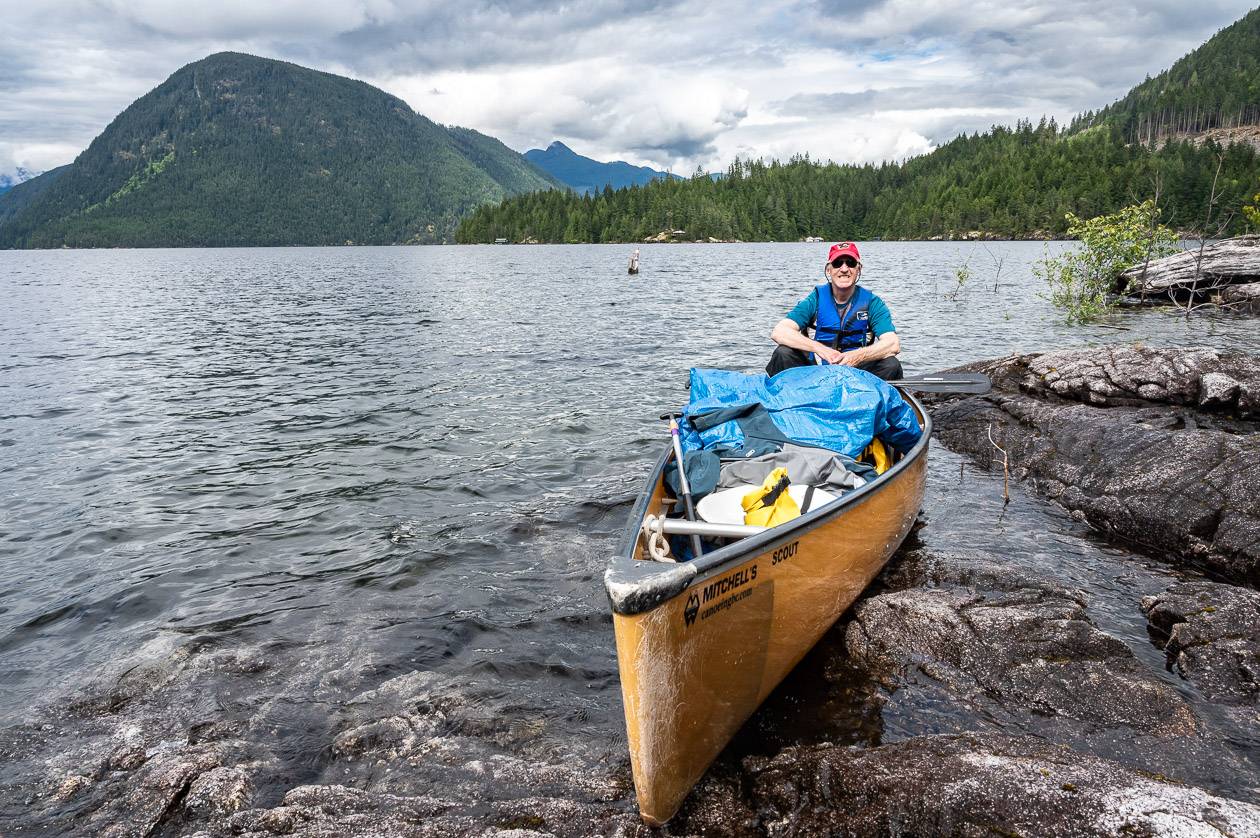
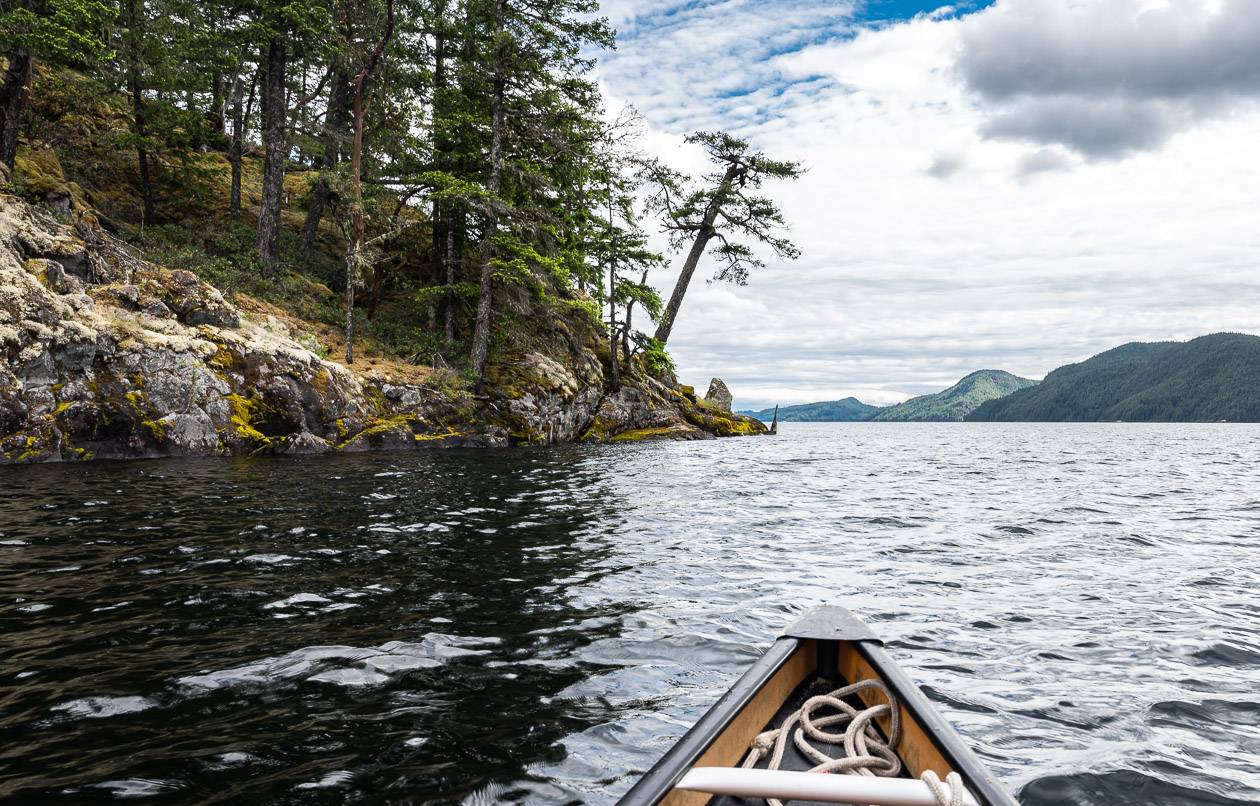

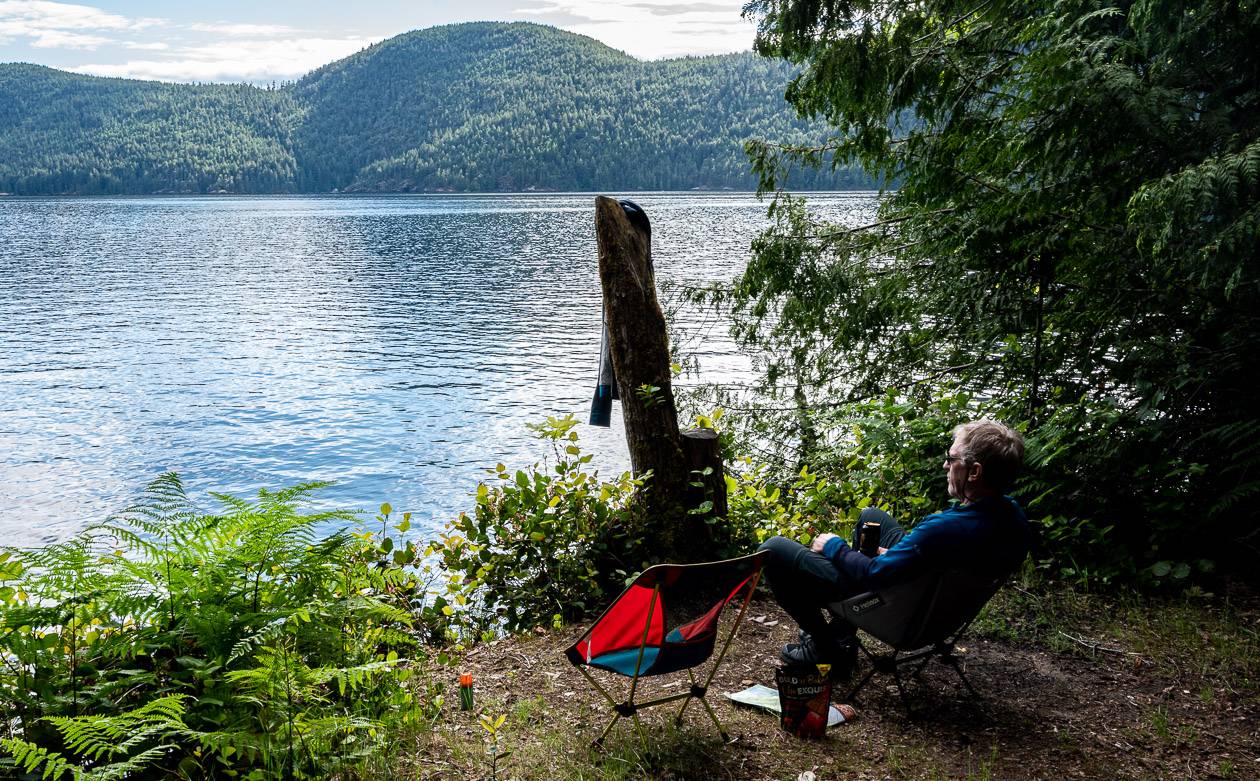
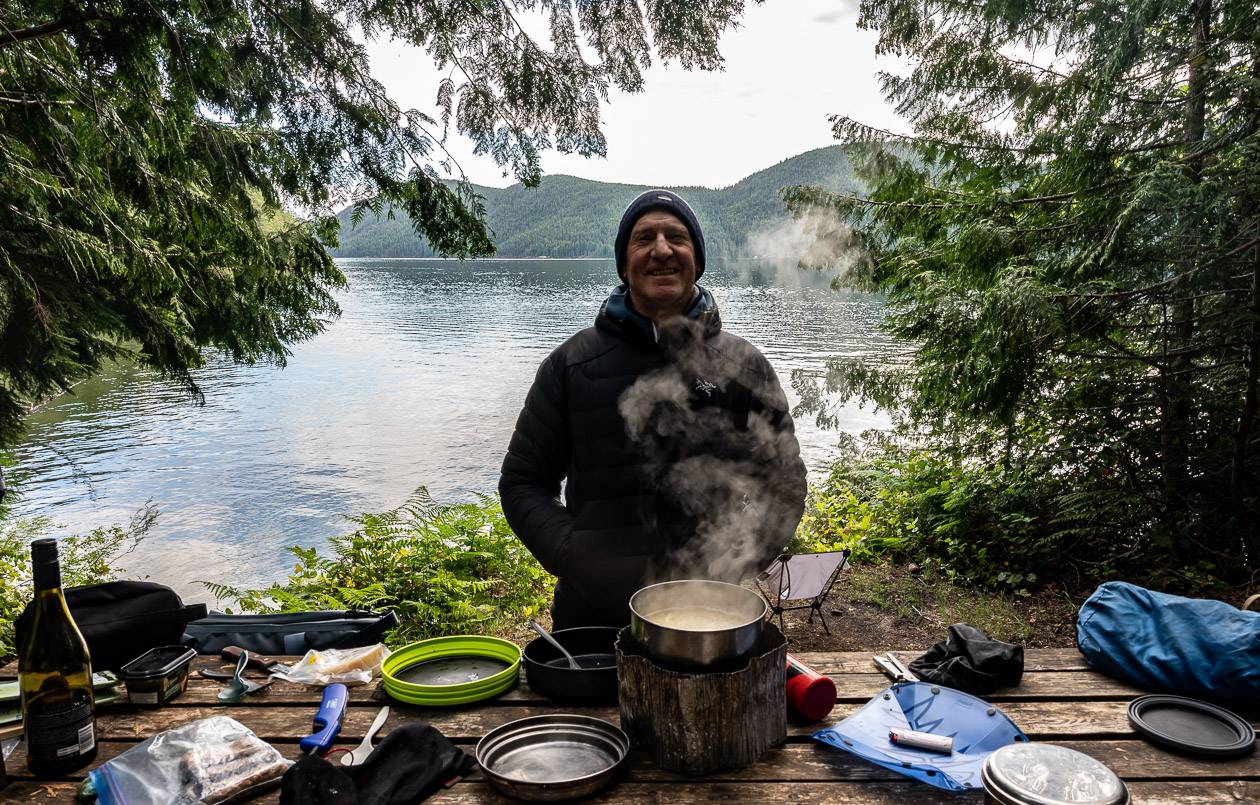

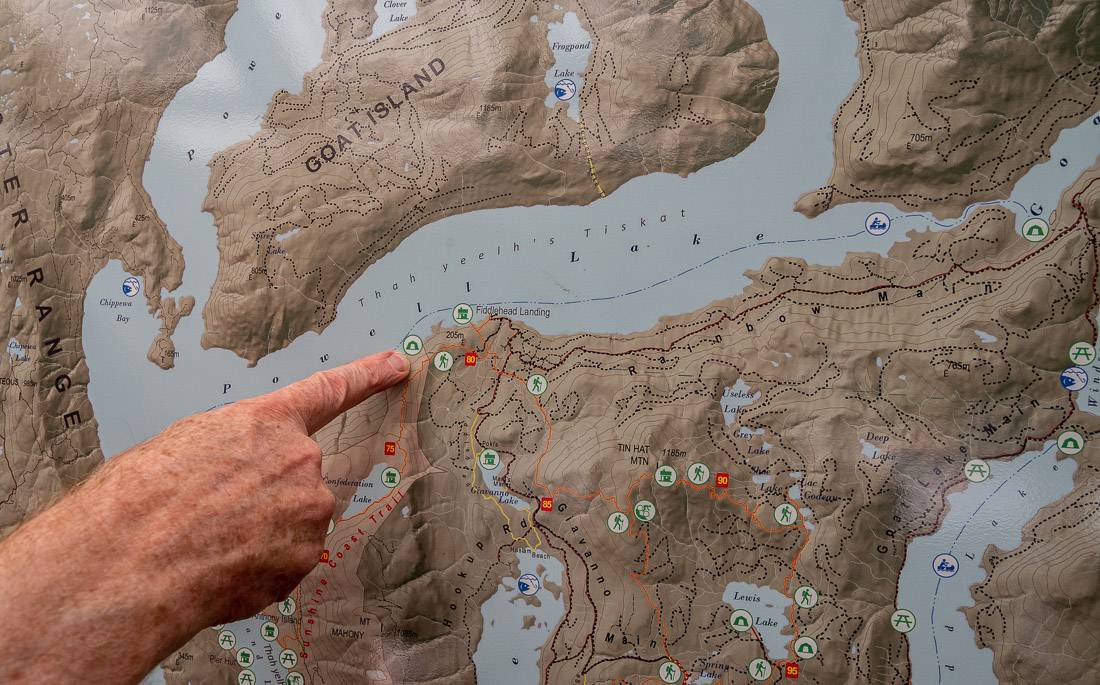
Day five on the Powell Forest Canoe Route
Start: Powell Lake at the start of the Inland Lake trail
Paddle: Approximately 8.0 kilometres to Mowat Bay in Powell River
Portage: None
Experience: Our last day was a sunny but windy one. It gave us a taste of what might have been for the other 22 kilometres! In just 90 minutes we were at Mowat Bay unloading and calling Chad for a pickup. The paddling was pretty along the shore of the lake, past beautiful trees, and lots of rock outcrop. We ducked in to check out Haywire Bay Regional Park – where you can also camp and paddled past the Outdoor Learning Centre.
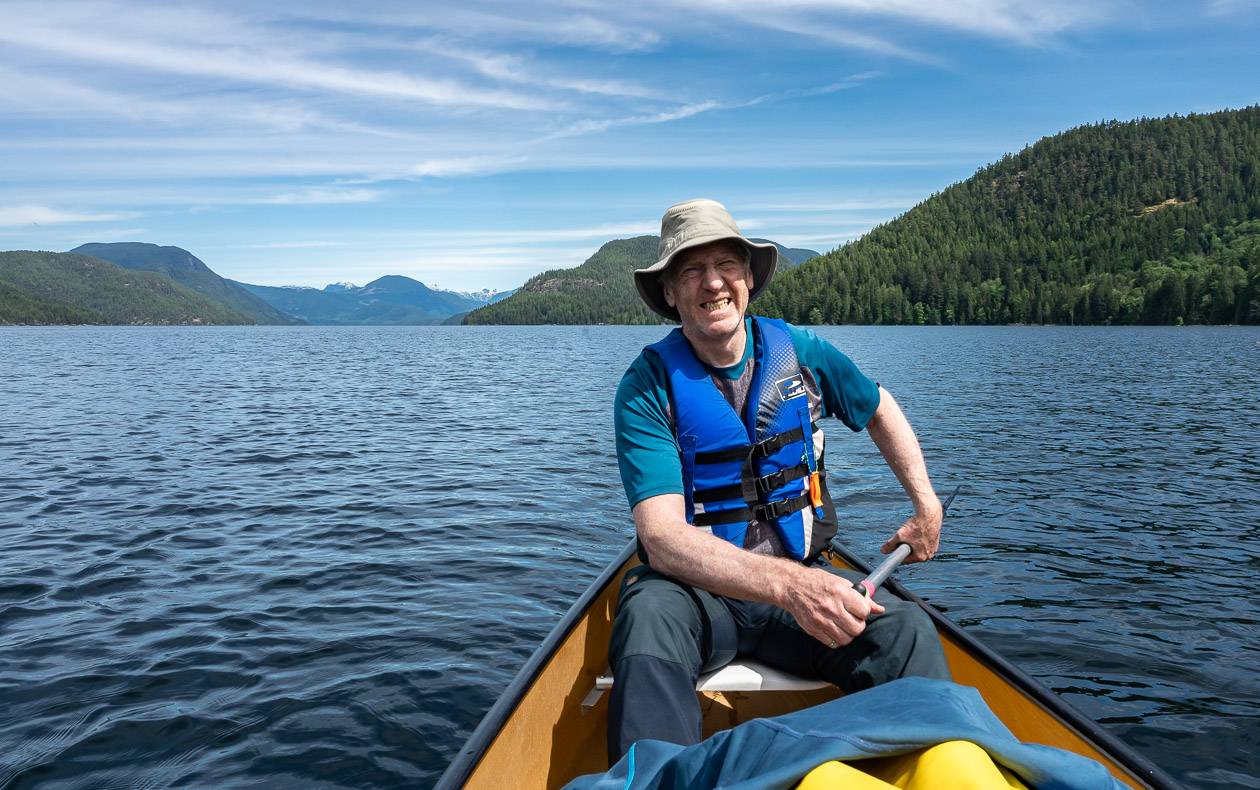
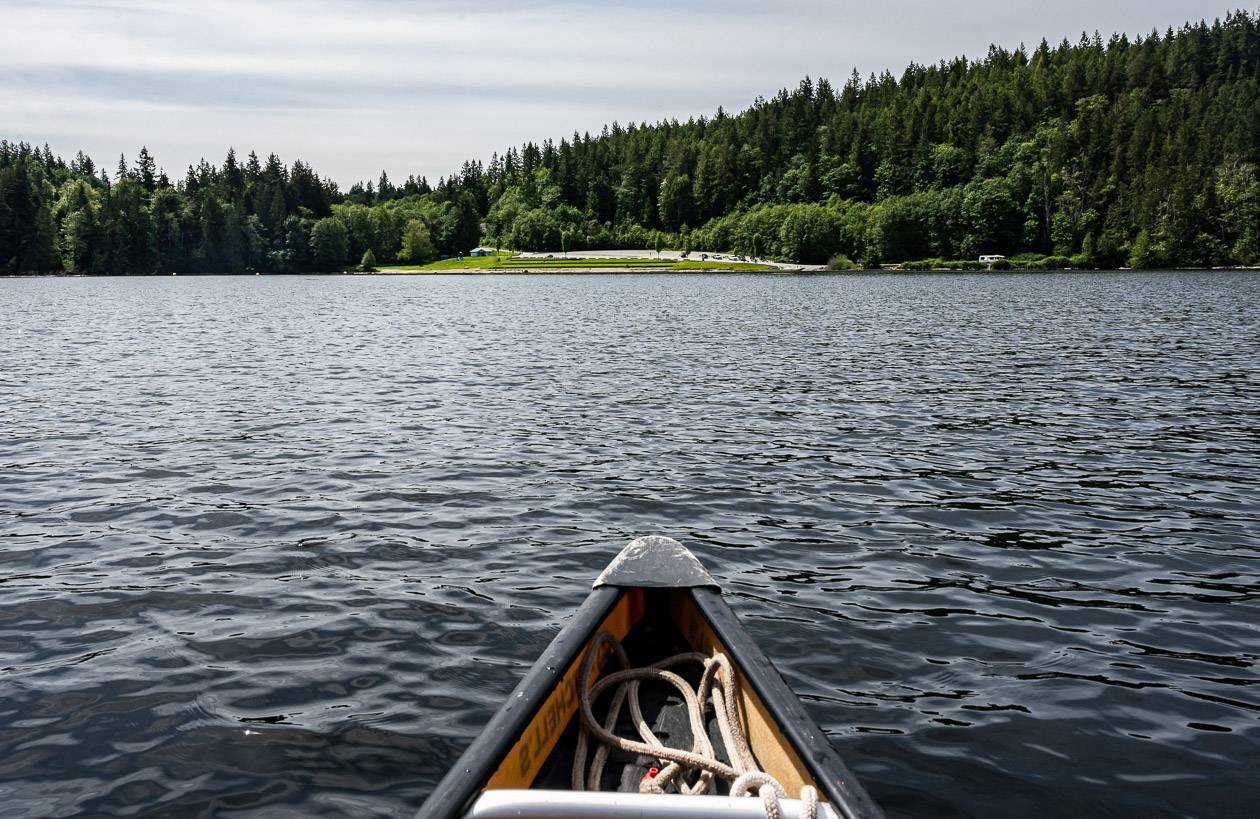
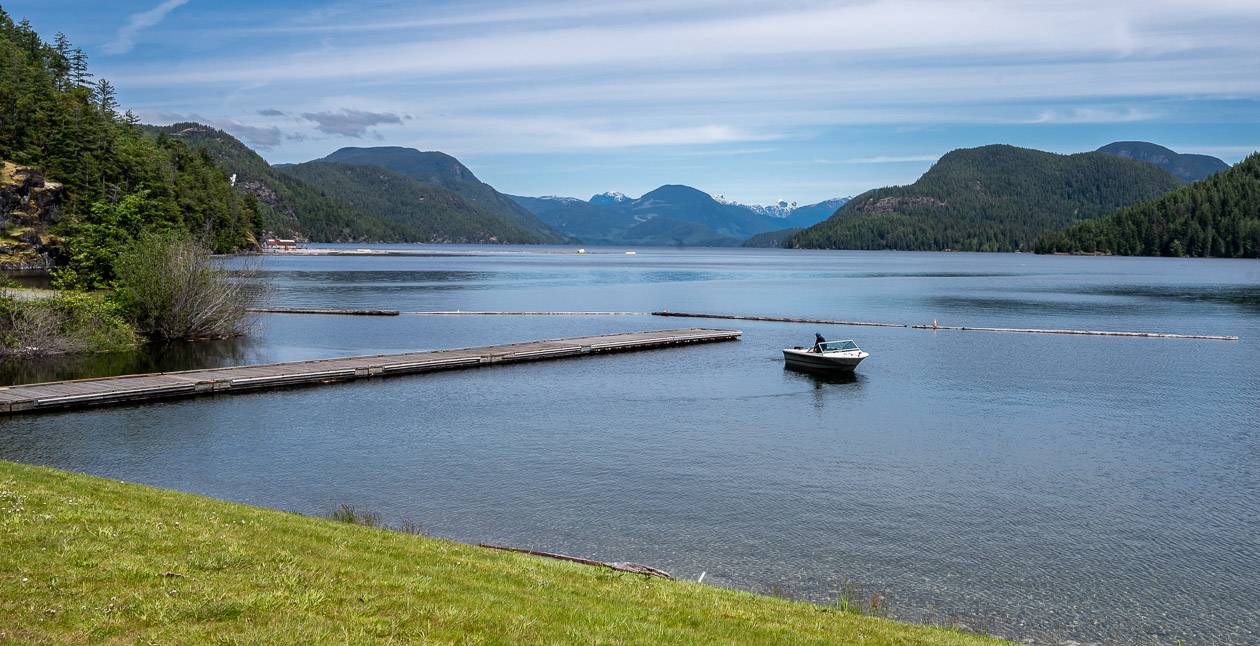
Getting to the start and finish of the canoe route
The best way to get to the start of the canoe route on Lois Lake is to book a shuttle ride with Chad Mitchell of Sasquatch Trails. He’s part of the Mitchell family – the people that rent canoes and gear – and have been for 30 plus years in Powell River so he knows the area and the logging roads like the back of his hand. He also has a radio which you need if you’re driving the logging roads.
If you’re flying into Powell River, he can pick up your canoes, your group and both drop you off and pick you up at the end of the route. However, if you are driving to Powell River, you can leave your car at Mowat Landing – and buy a parking pass. He’ll pick you up there and take you to the launch site on Lois Lake at an agreed upon time. Contact him for reservations and pricing.
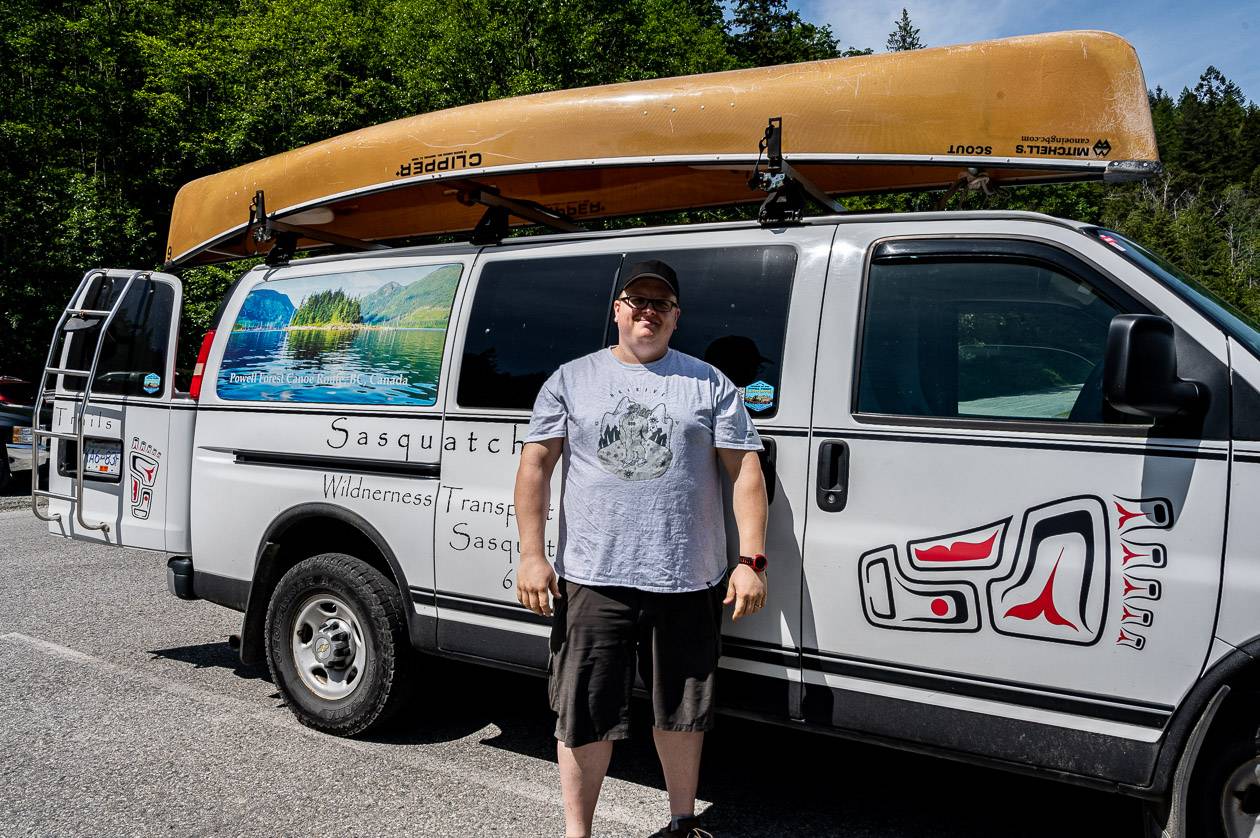
What to take paddling
If you’re planning to paddle the full Powell Forest Canoe Route, you really need to go prepared. This is temperate rain forest so it can rain hard at certain times of the year. And it can be windy so know the signs of hypothermia. Carry enough extra food for a day should you get wind bound or have an accident.
You can rent a canoe and all the gear from Mitchell’s Canoe & Kayak Sales & Rentals. I highly recommend renting a canoe barrel with a packing harness as that will help to keep your food safe from bears and it makes portaging much easier. And the lighter the canoe you rent, the easier it will be to portage.
We carried all our gear in waterproof bags. The North Face duffels have served us well over the years as have the smaller yellow ones like this one for stuff you need during the day. I love the see through feature.
We took fire starter with us, but all the wood was so wet I don’t know if we would ever have got a fire going. Be sure to have matches and several lighters no matter what. I packed our perishable food in Hydro Flask Day Escape Soft Cooler and would swear by this now. It is fully waterproof, and it keeps food cold for a couple of days. It’s also got a few places where you can attach carabiners so its easy to hang.
On this trip take extra rope and a couple of carabiners. There are no bear lockers so you MUST hang extra food. Each campsite comes with a long rope but that’s it.
I always pack Gear Aid Tenacious Tape in case I rip something like a sleeping bag or tent.
I would suggest packing a tarp and enough rope to tie it properly. I find the grommets from the cheap Canadian Tire tarps pull out too easily though that’s what we used.
I would also suggest a water filter, a can of bear spray (ask Chad from Sasquatch Trails before you buy one if he has any you can borrow!!) and the usual camping gear like a good tent and cooking gear. I have used our MSR stove for over a decade.
For comfort, pack a couple of camp chairs and a camp pillow for a better sleep.

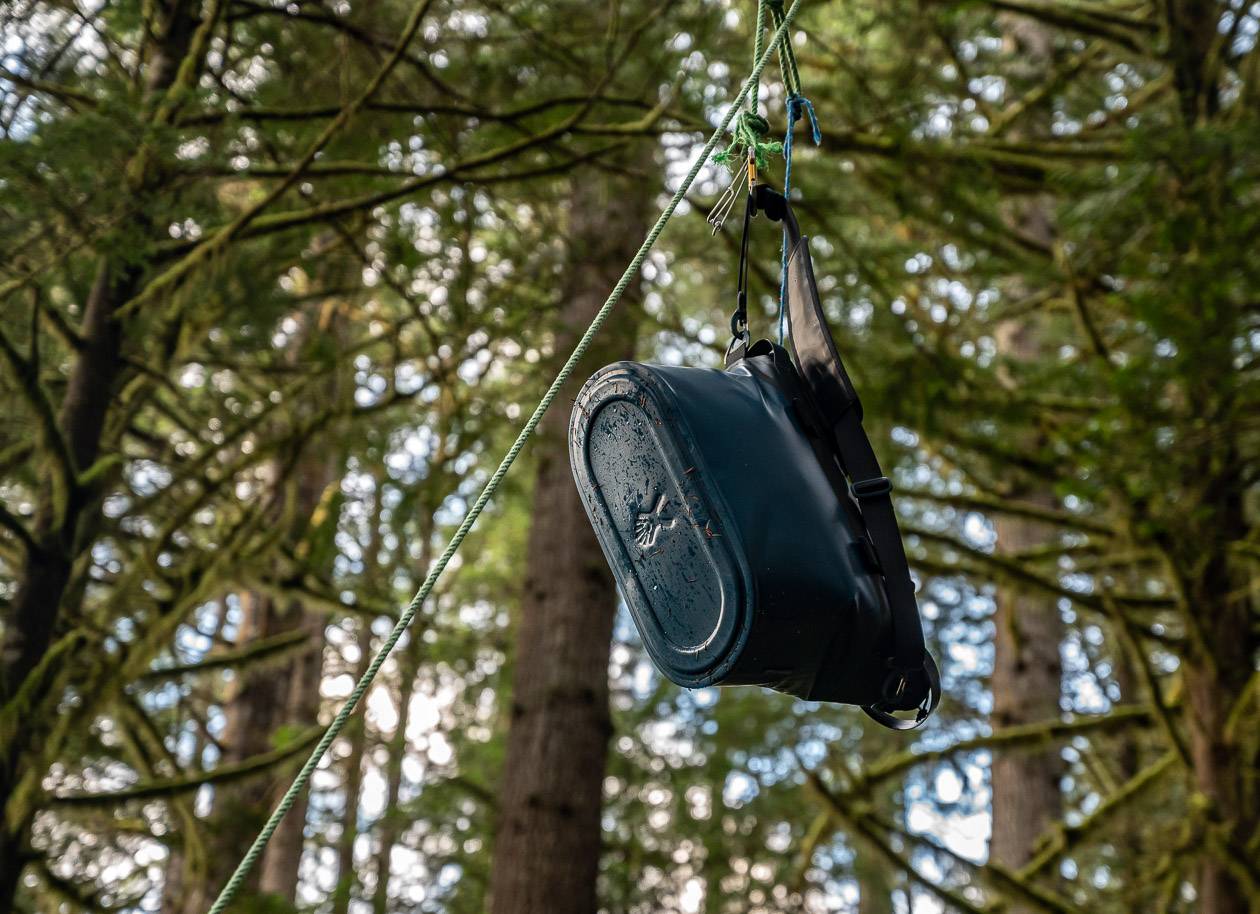
A few things that might help
- Portages are well-marked so if you don’t see the signs below, you’re not on an official portage.
- When you’re canoeing to a portage look for red markers. They will lead you right to the pull out.
- All campsites came with picnic tables and fire pits.
- There are outhouses at all campsites.
- I like having water shoes with me. Be sure to keep one dry set of camp clothes in a separate bag.
- Take some warm clothes even in summer – extra socks, a toque, and a packable down jacket.
- The bugs can be vicious so take the bug spray. They weren’t so bad in June that we needed bug nets.
- Bring good rain gear and include a ball cap to keep the rain off your face.
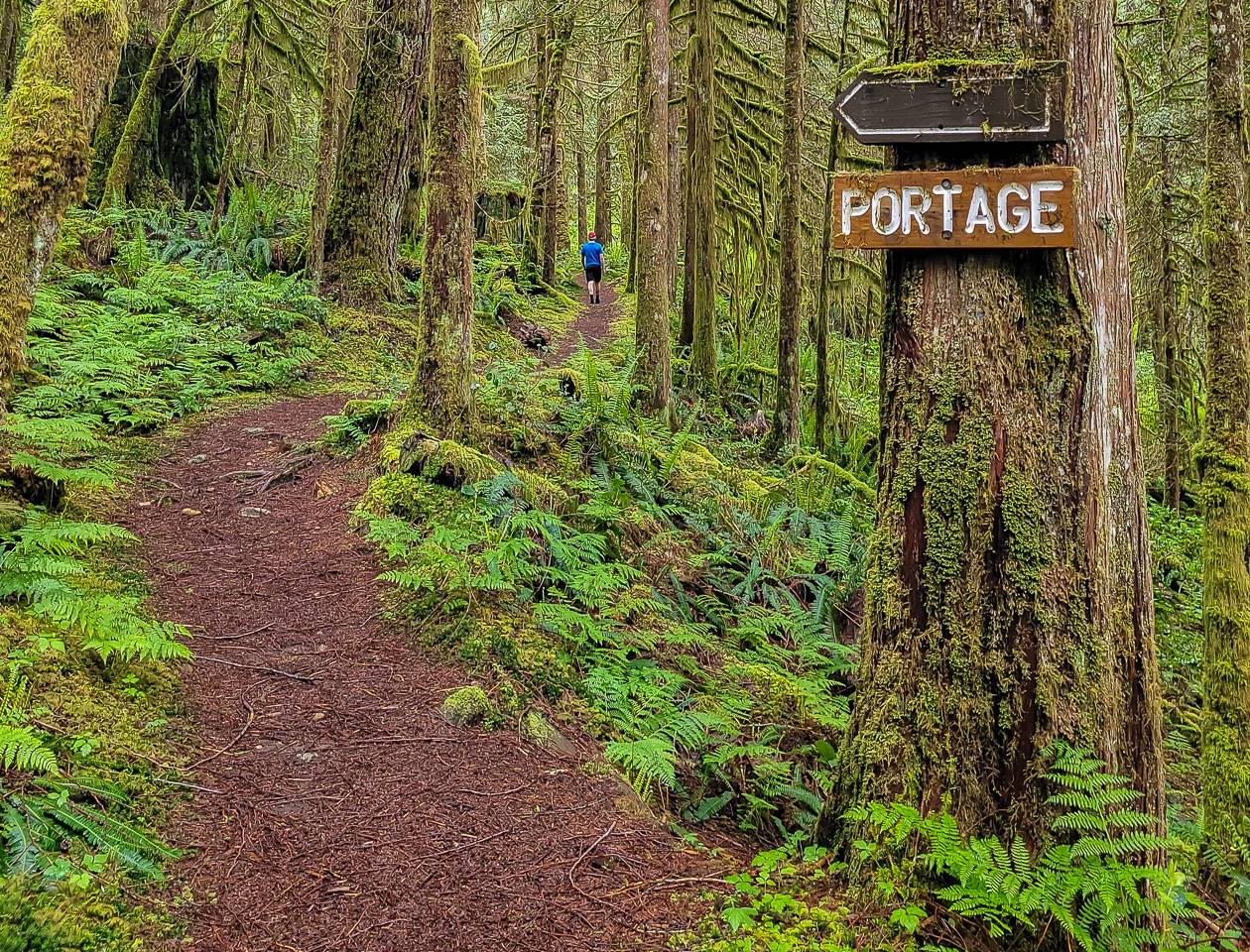
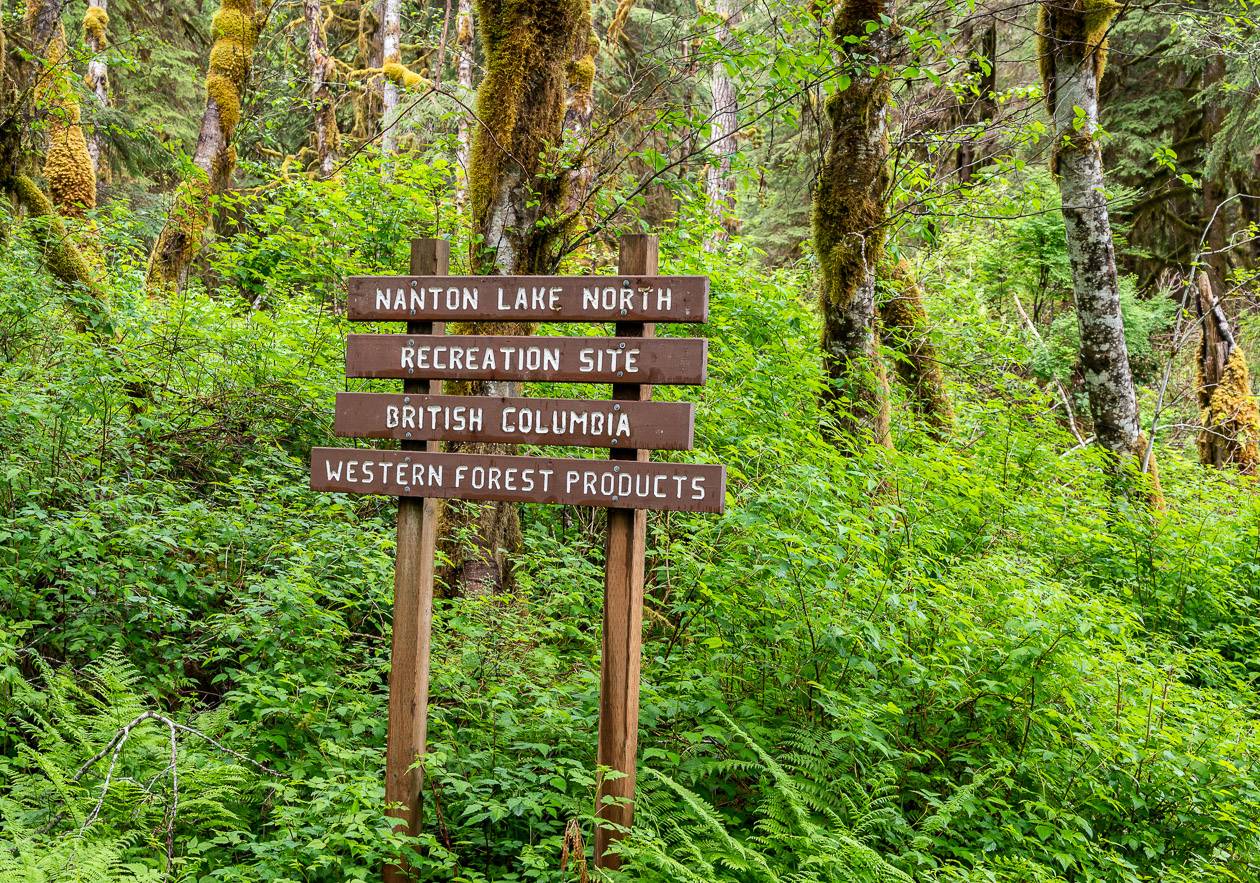
Can you kayak the Powell Forest Canoe Route?
There are sections of the Powell Forest Canoe Route that would work with a kayak, but I can’t imagine doing the whole thing because of the long and difficult portage between Windsor Lake and Goat Lake. That part of the trail is steep and narrow in places – and there is no room for a kayak cart. Even carrying a single kayak with two people would be tough going and it’s not recommended.
However, you could put in on Lois Lake and portage to Horseshoe Lake on a trail that is in pretty good shape – and it is wide too. Getting through the logs in a kayak at Horseshoe Lake could be problematic but doable so you could continue to Nanton Lake and camp there. The portage to Dodd Lake is not in nearly as good shape as the one out of Lois Lake so I wouldn’t recommend it unless two people were up for carrying single kayaks. I think it would be a tough experience too.
There is also the option to put in at Mowat Bay in Powell River and kayak through to Goat Island as there are no portages. So in theory, you could do about three days of the route, but only the hardcore kayakers who are prepared to carry their kayaks should consider the whole thing. I personally wouldn’t want to do it. And as Randy Mitchell from Friends of the Powell River Forest Canoe Route says, “this trip is really geared to canoes – and kayak carts have a reputation for causing ruts.” Go do the Bowron Lakes Loop instead!
Before or after your canoe trip
We were driven to Lund from the Powell River Airport by Sunshine Coast Shuttle. They also shuttled us around Powell River so we could get gas for our stove, along with some groceries, wine, and beer before continuing on to Lund. I love this village as its easy to walk around, there are a couple of good restaurants and the cabins at SunLund RV Park are a lovely place to spend a night.
Consider a stay here before or after your trip. It’s the gateway to Desolation Sound so you could add on some days of kayaking. There is also a small ferry over to Savary Island which by all accounts is a lovely place to visit. And if you’re feeling very ambitious, you could get shuttled out to Sarah Point by Terracentric Coastal Adventures – and either camp right there or hike a small section of the Sunshine Coast Trail.

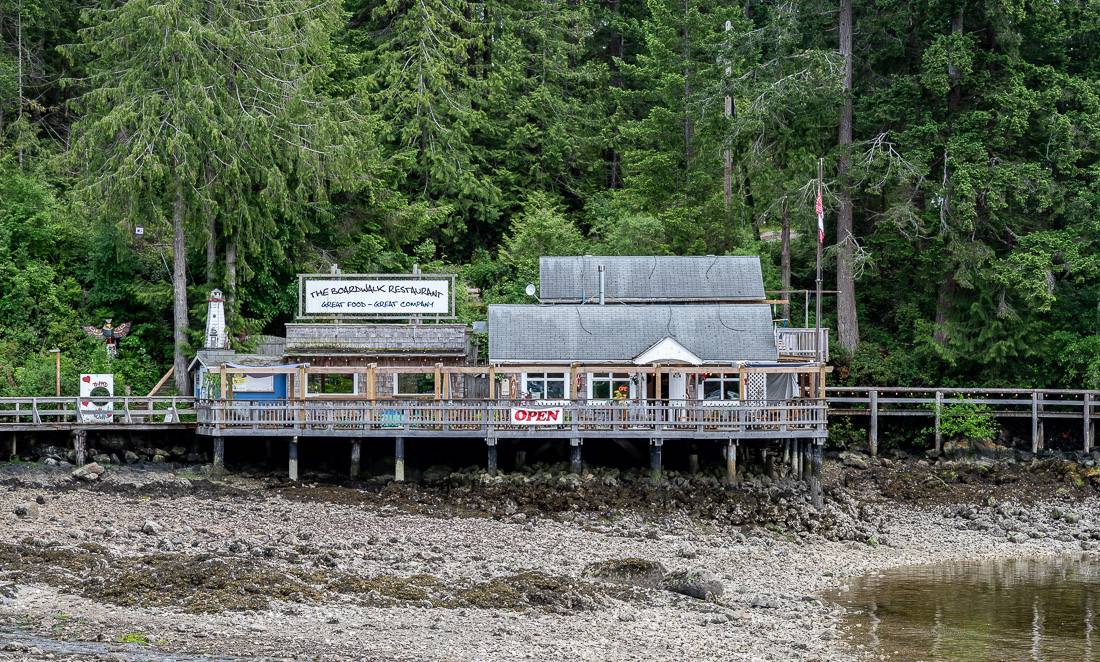
How to get to Powell River
There are numerous ways to get to Powell River and the start of the Powell Forest Canoe Route.
You can drive from Vancouver by taking two ferries – the Horseshoe Bay to Langdale ferry and then Earls Cove to Saltery Bay. Count on 4.5 hours if you have a reservation and don’t have to wait. Pay once at the first ferry, in either direction. Have a look at the ferry schedule to figure out the best connections.
If you’re coming from Vancouver Island you can take a 90-minute ferry ride from Comox to Powell River.
Alternatively, you can fly. Pacific Coastal Airlines services Powell River. John and I flew in from the South Terminal in Vancouver. It took just 25 minutes – and it’s one heck of a scenic flight.
As of March 2022, you can also fly from downtown Vancouver to Powell Lake on Harbour Air.
There are two bus lines that might also be of interest. The Island Link Bus services Vancouver Island and can get you to the Comox Ferry terminal.
The Sunshine Coast Connector will get you to Powell River from Vancouver.
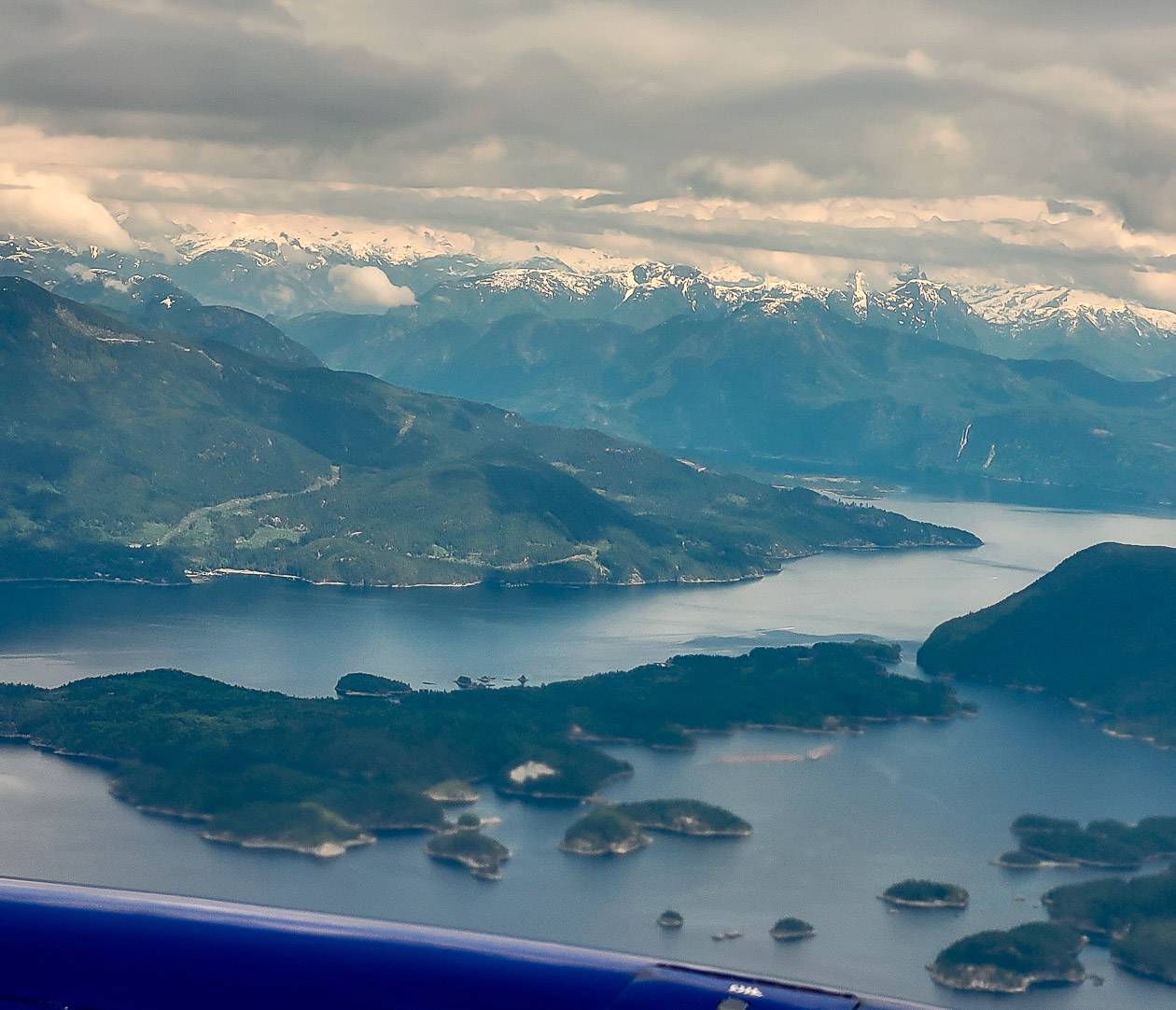
Further reading on things to do in the general area
A big thank you to Sunshine Coast Tourism for hosting me but all thoughts are mine alone.
Click on the photo to bookmark to your Pinterest boards.
